The few incidents covered here are those most local to New Mills and except for the two Heyford's took place on Kinder Scout. All are extracts from my own unpublished research. Biographies and photographs are usually the result of direct contact with survivors or family of those who died.
Date - 12th December 1936
The Handley Page Heyford entered service in November 1933 and had the distinction of being the RAF’s last biplane heavy bomber. In all the Heyford saw nine years front line service and at least forty machines remained in service at the beginning of the war in September 1939.
On the morning of the 12th December 1936 seven Handley Page Heyford's of 102 Squadron left Aldergrove, Co. Antrim, Ireland, to return home to their base at RAF Finningley. Over the Irish Sea they encountered a thick freezing fog and gradually broke formation as they lost sight of one another. Only one of the aircraft arrived safely at RAF Finningley. The crews of the other aircraft found themselves in the precarious position of being unsure of their location with limited fuel and no sight of the ground. They had no choice but to fly on and hope a break in the fog would reveal a suitable landing site.
Two aircraft from the flight made force landings in fields at the rear of the ‘Homestead’, Jackson Edge, Disley.
Heyford K4868. (Undamaged)
Crew Squadron Leader Attwood
Pilot Officer Bangay
Pilot Officer Betheder
Corporal Nott
Heyford K6898. (Written off) Sj 96805 84619
Crew Pilot Officer M. G. W. Clifford. Date of wings 20-2-36.
Leading Aircraftsman Makin
Leading Aircraftsman Jackson
Shortly before 1.00 P.M the droning of high-powered engines was heard above the village of Disley and through the fog glimpses of two large aircraft could be seen circling low over the area. At around 1-15 P.M. Squadron Leader Attwood in K4868 made a perfect landing in a field at Jackson Edge. A few minutes later Pilot Officer Clifford lined up K6898 and made an approach to a neighbouring field, but pulled out and flew round again. On his second approach the aircraft’s fixed undercarriage skimmed a hedge. Its wheels uprooted bushes and carried away fencing and wire. It ran across the length of the field and ploughed through two sets of iron railings, tore up a telegraph pole and buried its nose in a shrubbery on the boundary of the Homestead. The tail rose in the air as the aircraft came to rest. Maids employed at the Homestead saw the landing of the aircraft and expecting to find dead or injured airmen rushed across the lawn to give assistance. Instead they found one airman perched high in the rear gunners cockpit and two other heavily clad airmen emerging from the cabin of the aircraft. One of the airmen told the local paper ‘we circled low over the village and I tried to read the name on the sign at the railway station, but was unable to do so because of the bad visibility. Then there appeared a break in the fog and we dived through it making for what appeared to be the best landing ground in the district’. The airman told listeners that he was lucky to be alive as the propeller blades had slashed through the cabin wall against which he had been bracing himself. The crews of both aircraft were provided with refreshments at the Homestead. The following day (Sunday) a large crowd gathered to watch K4868 take off and continue its journey to RAF Finningley. The wreck of K6898 was removed to RAF Sealand on the 16th December and struck off charge in March of the following year.
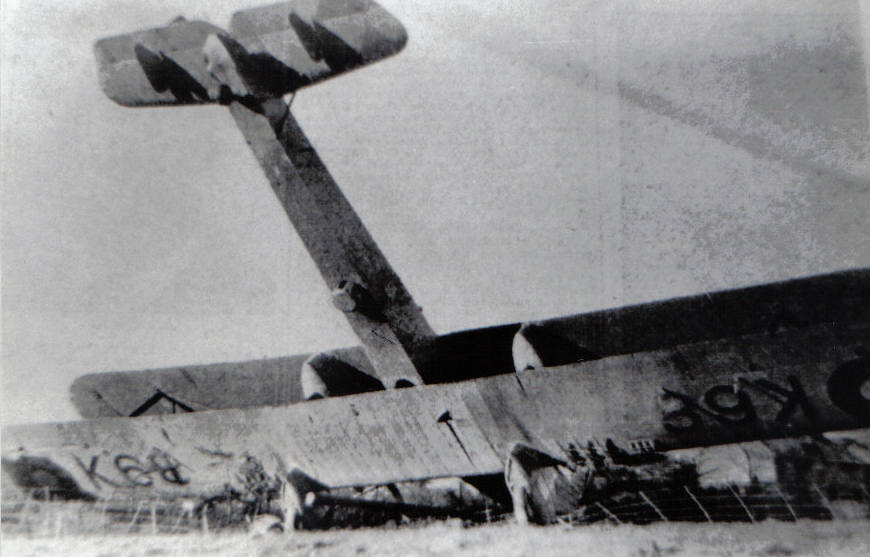
Though it is difficult to trace the careers of servicemen I have managed to track that of Pilot Officer Clifford.
Pilot Officer Michael George Winsloe Clifford, RAF, took the unusual step of joining the Naval Fleet Air Arm. Probably in January 1938 when he is known to have held the rank of Lieutenant. Fleet Air Arm records are sketchy and many were destroyed following the war. However, it is still possible to follow his progress. On the 25th January 1941 Lt. Clifford was serving with 815 squadron and on the 16th June he was the pilot of an unidentified Swordfish which failed to return from an attack on the French destroyer Chevaliere Paul. Lt Clifford and Sub/Lt Winter were both French (Vichy) prisoners of war. Whether Lt Clifford was repatriated is unclear. The next information I have found relates to his heroic death on the 17th July 1947. Lieutenant- Commander Michael George Winsloe Clifford, aged 31, attached to the ministry of supply, was on a week’s training course rocket firing at St. Merryn. He took off in a Supermarine Seafire at 11.08 a.m for dummy diving practice over the bombing ranges at Port Quin. Having completed his run just before noon, he was returning to base when hundreds of holidaymakers in Padstow saw he was in difficulties over the town. Lieutenant Commander Clifford chose to remain in his cockpit in an heroic bid to keep the aircraft in the air until he was clear of the town and out over the estuary of the Camel River. He missed the roof of the Metropole Hotel and houses adjoining the Southern railway station by a few feet before crashing onto a sandbar in the river.
Commander Clifford apparently tried to make a forced landing on the wide town bar, near the southern railway goods sidings. The tide was out and a wide expanse of exposed sand gave him a last chance to save himself, but the aircraft buried its nose in the sand and he was killed instantly. A witness recalled ‘the plane was weaving in the air it was obvious that the pilot was fighting to prevent it from crashing into the crowded streets. He had plenty of time to bale out. There is no doubt in my mind that he gave his life to prevent what would otherwise have been a terrible disaster. There were hundreds of people around if the aircraft had come down in the town the loss of life could have been very high’. An officer at the Royal Naval Air Station said it appeared that commander Clifford had ample time to bale out and save his life, but it seemed probable that he had preferred to try to crash land on the sandbar rather than risk his aircraft falling into the crowded street.
Of the other aircraft which left Aldergrove for Finningley that day only Sergeant Biddulph and his crew reached RAF Finningley. Heyford K4874 crashed 20 yards from Dingle Farm, Oldham, after being abandoned by the crew. Heyford K5188 force landed near Whitwell Hill. Heyford K4864 caught the top of a telegraph pole and crashed 8 miles from Gainsborough. The seventh aircraft Heyford K6900 was piloted by the then Sergeant V. C. Otter (later Air Vice-Marshal).
In 1995 I was lucky enough to speak with Vic Otter who later wrote the following account of the flight for me. ‘Number 102 squadron, equipped with Vickers Virginia night bombers, was reformed at RAF worth down, near Winchester during the latter part of the then RAF expansion programme. It was re-equipped with Handley Page Heyford night bombers early in 1936. In the August of that year it moved to RAF Finningley, Doncaster which was then being built. On the 19th November 1936, seven aircraft of the squadron flew in formation to RAF Aldergrove, Northern Ireland where it was to undertake a 3-4 week annual training camp. This involved air gunnery exercises and practice bombing over Loch Neagh. The trip across the Irish Sea was flown at a height of 4000ft and took two and a half-hours.
The detachment was due to return to Finningley on Friday the 11th December 1936, but the flight was cancelled because of adverse weather conditions on the route. Although it was unusual for regular RAF Squadrons to fly on Saturday’s or Sunday’s in those days it was never the less decided to make the return trip on the 12th subject to acceptable weather conditions. The 12th broke bright and sunny at Aldergrove. A weather report obtained from the duty pilots office at around 9am forecast that enroute weather conditions would be favourable with a cloud base of 4,000ft acting Squadron Leader C. Attwood was our C. O. Decided that in these circumstances the return trip was on. The seven aircraft took off at 10-45am and joined up in formation over Northern Ireland.
 The route decided upon was Aldergrove, Hilpsford point (south of Barrow), Morecombe, Finningley. I was flying in the inside left position and all went well until we flew over Morecambe at 4000ft. There we encountered what appeared to be very dense sea fog at our altitude. We altered course to roughly Southeast and headed for Finningley. Thereafter conditions became atrocious, visibility was nil, and we could not see anything of the other aircraft in the formation. I asked my wireless operator A. C. Bodenham, to get a bearing from the radio ground station at Finningley. After a short period he came forward to tell me that he was unable to contact Finningley because our trailing aerial had iced up. (It later transpired that the ground station was out of action for annual maintenance on that refreshments at the day). Soon after this I caught a glimpse of our own port wing. It had a very thick covering of ice. Our altitude at that time was 4000ft, and I decided to increase engine power to gain height. At this time, we calculated our E. T. A at Finningley as 1-15pm. I realised we were in something of a predicament. In the nil visibility conditions I considered it unwise to break formation because of the risk of collision with one of the other aircraft which I assumed were still in formation. Although it was cold and miserable, there was no panic. That is until at about12-45pm when my co-pilot Sgt Church, yelled ‘get up’ I remember seeing a dark mass ahead of me and tried to climb quickly, but the heavy icing prevented this. I came to in the midst of burning wreckage, with the frame of the port windshield around my head, and my woollen scarf and fur lined goggles ablaze. Here was snow everywhere I rolled in it to put the flames around my face and eyes out. On getting up I found my right ankle very painful and my right wrist burnt. Snow covered the local rough terrain and there was freezing fog. I hobbled around the blazing wreckage calling the names of my crew members. There was no response. As I extended my search looking for them I found no trace of any of them or their parachutes. However I stumbled on a narrow foot track and found that it led to a wooden shed in which there was live poultry. I reasoned that someone would come along at least daily to feed the chickens. I slumped down on the lee side of the shed. After sometime, I do not remember how long it was, I heard voices and shouts in the distance. I screamed out where I was and they quickly located me. There were some 4 or 5 young chaps who told me I was near a place called Hebden Bridge. Having advised them that there were three other crew members some of them led me to the local post office. I was in great pain and had difficulty in negotiating stone walls so one of them supported me. I suppose the appalling condition of my face upset them somewhat. When we reached the post office Mrs Alathea Johnson the postmistress took one look at me and turned all the mirrors in the place to the wall. She led me to a room at the back, laid me on a sofa and applied lint coverings to my face, right wrist and right ankle. She also told me that I would have to wait awhile for an ambulance because the only one available had gone as near as possible to the crash site in the hope of finding other survivors. When the ambulance came to pick me up I was told that Sgt Church was in it. He was obviously in great pain and died on the way to Halifax Royal Infirmary. I do not know what became of the other two-crew members except that they were both killed. One body was found by civilian rescuers beside the burning aircraft. The other was recovered from the wreckage). Only one aircraft reached Finningley. It was piloted by Sgt Biddulph a great friend of mine. He later told me that having estimated he was clear of the Pennines he made a forced landing in fog conditions in what proved to be a field in Lincolnshire. A local farmer told him where he was and he decided to head for Finningley narrowly missing overhead electricity cables in the process. Having pressed on in bad visibility he decided that he had had enough and would put down in the first large field he saw. This he did. Only after landing did he discover that he had landed at RAF Finningley! The route decided upon was Aldergrove, Hilpsford point (south of Barrow), Morecombe, Finningley. I was flying in the inside left position and all went well until we flew over Morecambe at 4000ft. There we encountered what appeared to be very dense sea fog at our altitude. We altered course to roughly Southeast and headed for Finningley. Thereafter conditions became atrocious, visibility was nil, and we could not see anything of the other aircraft in the formation. I asked my wireless operator A. C. Bodenham, to get a bearing from the radio ground station at Finningley. After a short period he came forward to tell me that he was unable to contact Finningley because our trailing aerial had iced up. (It later transpired that the ground station was out of action for annual maintenance on that refreshments at the day). Soon after this I caught a glimpse of our own port wing. It had a very thick covering of ice. Our altitude at that time was 4000ft, and I decided to increase engine power to gain height. At this time, we calculated our E. T. A at Finningley as 1-15pm. I realised we were in something of a predicament. In the nil visibility conditions I considered it unwise to break formation because of the risk of collision with one of the other aircraft which I assumed were still in formation. Although it was cold and miserable, there was no panic. That is until at about12-45pm when my co-pilot Sgt Church, yelled ‘get up’ I remember seeing a dark mass ahead of me and tried to climb quickly, but the heavy icing prevented this. I came to in the midst of burning wreckage, with the frame of the port windshield around my head, and my woollen scarf and fur lined goggles ablaze. Here was snow everywhere I rolled in it to put the flames around my face and eyes out. On getting up I found my right ankle very painful and my right wrist burnt. Snow covered the local rough terrain and there was freezing fog. I hobbled around the blazing wreckage calling the names of my crew members. There was no response. As I extended my search looking for them I found no trace of any of them or their parachutes. However I stumbled on a narrow foot track and found that it led to a wooden shed in which there was live poultry. I reasoned that someone would come along at least daily to feed the chickens. I slumped down on the lee side of the shed. After sometime, I do not remember how long it was, I heard voices and shouts in the distance. I screamed out where I was and they quickly located me. There were some 4 or 5 young chaps who told me I was near a place called Hebden Bridge. Having advised them that there were three other crew members some of them led me to the local post office. I was in great pain and had difficulty in negotiating stone walls so one of them supported me. I suppose the appalling condition of my face upset them somewhat. When we reached the post office Mrs Alathea Johnson the postmistress took one look at me and turned all the mirrors in the place to the wall. She led me to a room at the back, laid me on a sofa and applied lint coverings to my face, right wrist and right ankle. She also told me that I would have to wait awhile for an ambulance because the only one available had gone as near as possible to the crash site in the hope of finding other survivors. When the ambulance came to pick me up I was told that Sgt Church was in it. He was obviously in great pain and died on the way to Halifax Royal Infirmary. I do not know what became of the other two-crew members except that they were both killed. One body was found by civilian rescuers beside the burning aircraft. The other was recovered from the wreckage). Only one aircraft reached Finningley. It was piloted by Sgt Biddulph a great friend of mine. He later told me that having estimated he was clear of the Pennines he made a forced landing in fog conditions in what proved to be a field in Lincolnshire. A local farmer told him where he was and he decided to head for Finningley narrowly missing overhead electricity cables in the process. Having pressed on in bad visibility he decided that he had had enough and would put down in the first large field he saw. This he did. Only after landing did he discover that he had landed at RAF Finningley!
I was kept in the Halifax Royal Infirmary for a couple of weeks and then transferred to the hospital at RAF Cranwell after a one night stop over at Finningley. After a short spell at Cranwell I was moved to the RAF hospital at Halton and then Uxbridge where on and off for the next two years or so I received extensive facial plastic surgery at the hands of the then Mr Archie McIndoe. Towards the end of 1938 I rejoined 102 Squadron, but regrettably was declared unfit for further flying duties.
Date - 22nd July 1937
Location - Broadlee Bank Tor, Above Edale.
Heyford Mk111 K6875. Destroyed by fire. Sk 11092 86013
166 Sqn. Night navigation exercise.
Pilot 342070 Sergeant Newton William Baker, 848hrs
2nd Pilot 580119 Sergeant Charles Patrick Dugaid McMillan
514997 Sergeant James William Barker
523998 Aircraftsman 1st class Eric James McDonald
525003 Aircraftsman 1st class William Henry Gray
523589 Aircraftsman 2nd class Ernest John Musker
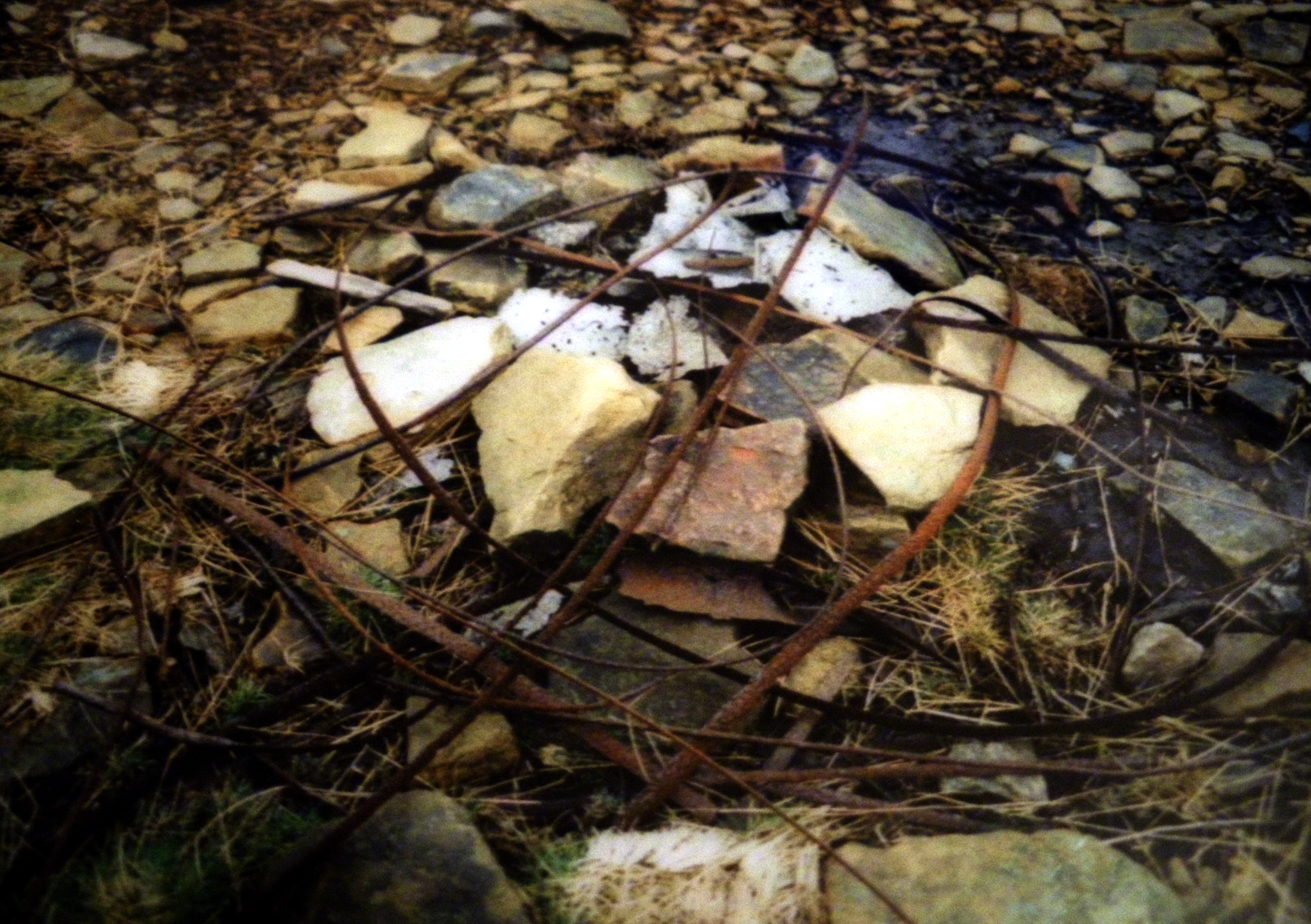 Some of the villagers of Edale were awakened by the sound of the engines of a low flying aircraft passing overhead. Others had already seen very lights been shot from the aircraft toward the ground in an apparent attempt by the crew to establish their height. The summit of Broadlee Bank Tor was shrouded in mist, as were the heights of kinder scout. The Heyford smashed through a dry stonewall and careered up the slope of the tor in flames. Some of the locals from the village struggled up the slope to aid the crew, but when they arrived they found the aircraft burning fiercely, escaping fuel had caused fire all around. Two bodies were found on the ground near the wreckage and nearby them lay an RAF instruction book. A thick mist still covered the scene of the accident the following morning as the bodies of the crew were carried down to the village. The small and sombre procession carefully picking their way through the mist, three of the bodies borne on stretchers, and three on a horse drawn sled. The bodies of the airmen were housed in a large shed at the rear of the Nags Head Hotel. Today it is still possible to see the point were the Heyford struck the wall, which was never rebuilt. A thirty-foot section is spread onto the moor behind, up toward a point where the peat was burnt away down to the rock below. Only a few fragments of the massive tangled frame of the Heyford now remain. Some of the villagers of Edale were awakened by the sound of the engines of a low flying aircraft passing overhead. Others had already seen very lights been shot from the aircraft toward the ground in an apparent attempt by the crew to establish their height. The summit of Broadlee Bank Tor was shrouded in mist, as were the heights of kinder scout. The Heyford smashed through a dry stonewall and careered up the slope of the tor in flames. Some of the locals from the village struggled up the slope to aid the crew, but when they arrived they found the aircraft burning fiercely, escaping fuel had caused fire all around. Two bodies were found on the ground near the wreckage and nearby them lay an RAF instruction book. A thick mist still covered the scene of the accident the following morning as the bodies of the crew were carried down to the village. The small and sombre procession carefully picking their way through the mist, three of the bodies borne on stretchers, and three on a horse drawn sled. The bodies of the airmen were housed in a large shed at the rear of the Nags Head Hotel. Today it is still possible to see the point were the Heyford struck the wall, which was never rebuilt. A thirty-foot section is spread onto the moor behind, up toward a point where the peat was burnt away down to the rock below. Only a few fragments of the massive tangled frame of the Heyford now remain.
342070 Sergeant Newton William Baker, age 34 of Norwich road, Thetford, Norfolk. Qualified as a pilot on the 30th June 1926.
580119 Sergeant Charles Patrick Dugaid McMillan, son of Charles McMillan of Highbury crescent, London. Qualified as a pilot in August the previous year.
514997 Sergeant James William Barker, aged 26, husband of Muriel barker of Highgate, Beverley. James Barker had met Miss Muriel Arnold in Egypt and married the previous Christmas their life together had been blissfully happy. James was a hard workingman of cheerful disposition. He had been in the RAF five years. Its sad to note that James’s mother learned of his death via the wireless before a telegram informing her of the tragedy arrived from his wife.
523998 Aircraftsman 1st Class Eric James McDonald, aged 23,only son of Mr. and Mrs McDonald of lime grove, lodge lane, Liverpool. Recently returned to the squadron following a period of leave. Eric had been in the air force two years.
525003 Aircraftsman 1st Class William Henry Gray, age 20, son of William Gray of Cwmaman road, Codreaman, Wales. William H. Gray was very keen to fly and left his job as a timekeeper at the Fforchaman colliery, Cwmamam to join the RAF in 1935, at the age of 18. He made his first flight two months prior to the accident and had spoken enthusiastically of his experiences to his family. William was said to be of quiet and likeable disposition.
523589 Aircraftsman 2nd Class Ernest John Musker, aged 20, Ernest’s family lived at Renville road, Broadgreen, Liverpool. His mother was a stewardess on the Canadian Pacific liner Montcalm that was at the time of the accident in Montreal. Relatives decided not to inform her of Ernest’s death though they were worried she might learn of it from the wireless. Ernest had joined the RAF in 1935. He had not been home since Christmas but was looking to getting leave soon so as to meet his mothers ship on its return to Liverpool. He was known as a popular lad very fond of sports. He belonged to the young men’s association at St. Oswald’s Roman Catholic Church, Old Swan. Ernest was buried with full military honours at ford cemetery on the 28th July. His coffin draped with the union jack was borne to the cemetery on a carriage laden with wreaths. RAF officers and men provided a guard of honour to the graveside.
Date -21st January 1942
HANDLEY PAGE HAMPDEN - twin-engined monoplane bomber was designed in 1933 under the direction of G R Volkert, having a crew of three and a slender fuselage designed to accommodate nose, dorsal and ventral turrets and a bomb-bay carrying 4,000lb of bombs.
The Handley Page Hampden 1 had an armament of one 0.303 in Vickers 'K' gun in nose, dorsal and ventral positions plus one fixed forward firing Browning in fuselage side, stowage for four 500lb or two 1,500lb mines or two 2,000lb (908 kg) bombs; later aircraft had twin ventral and dorsal guns on Rose mountings. The first production aircraft was flown June 21, 1938; deliveries began to No 49 Squadron and six squadrons operational by September 1939. Production total 500 by Handley Page plus 770 by English Electric at Preston and 160 by Canadian Associated Aircraft in Quebec and Ontario. The Hampden was operational 1940-42 for leaflet dropping, mine-laying and day and night bombing; thereafter it was used solely for training. Max speed, 254 mph (409 km/h) at 13,800ft .Cruising speed, 167 mph (269 km/h).
Handley Page Hampden AE381
Location of crash - Cluther Rocks, Kinder Scout, Derbyshire. Map ref 076879
Unit - 50 Squadron
Home base - RAF Skellingthorpe, Lincolnshire.
Pilot- 404820 Sergeant R. G. Heron
Observer- 407487 Sergeant W. C. Williams
W. Op/ Air Gnr- 1375369 Sergeant S. A. Peters
W. Op/ Air Gnr- 1152528 Sergeant W. Tromans
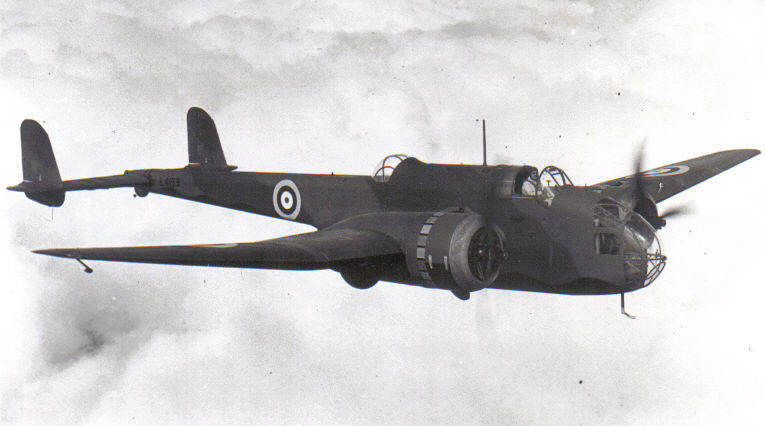
Cause of accident - whilst on a night cross country flight this inexperienced crew became lost in very poor weather conditions. They were fifty miles off course and in the middle of a blizzard when they attempted a landing at Ringway. It appears that they were assisted in their approach to the airfield by wireless contact with the control tower. However visibility due to the snow was so poor that they passed by the airfield unseen and unheard and flew on toward the rising ground of the Peak District. At 20.38 the Hampden crashed at Cluther Rocks on the Western edge of Kinder Scout and burnt out. There were no survivors. The officer commanding 50 Squadron later recorded that the crew had been fully briefed prior to departure on how to obtain navigational assistance.
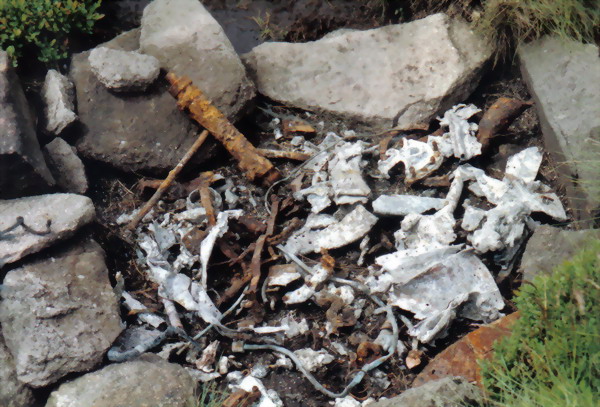
 Sergeant (pilot) Royal (Roy) George Heron. RAAF. Age 25. Son of Mr and Mrs J. Heron of Silent Grove, Queensland, Australia. Commemorated Manchester Southern Cemetery. Roy lived with his parents, brother Jim and sister Joyce on a Sugar Cane Farm in an area known as Silent Grove, near Mackay. Roys father and mother were very early settlers in the district, sometime in the 1920's. They remained until they sold their property at the end of the war. Roy was born at Mackay and educated at Mackay State School. On leaving school he entered Gatton Agricultural College were he took a course in general agriculture. While at college he gained the junior championship for athletics in 1931. On completion of his course he returned home to assist his father on the farm. He joined the RAAF on December 3, 1940, and received his training in New Zealand and Canada. His brother Jim was also in the RAAF. Roy is Commemorated on an Honour Board in the district war Memorial Hall of a Queensland township named Calen. Sergeant (pilot) Royal (Roy) George Heron. RAAF. Age 25. Son of Mr and Mrs J. Heron of Silent Grove, Queensland, Australia. Commemorated Manchester Southern Cemetery. Roy lived with his parents, brother Jim and sister Joyce on a Sugar Cane Farm in an area known as Silent Grove, near Mackay. Roys father and mother were very early settlers in the district, sometime in the 1920's. They remained until they sold their property at the end of the war. Roy was born at Mackay and educated at Mackay State School. On leaving school he entered Gatton Agricultural College were he took a course in general agriculture. While at college he gained the junior championship for athletics in 1931. On completion of his course he returned home to assist his father on the farm. He joined the RAAF on December 3, 1940, and received his training in New Zealand and Canada. His brother Jim was also in the RAAF. Roy is Commemorated on an Honour Board in the district war Memorial Hall of a Queensland township named Calen.
Sergeant Walter Chandler Williams, RAAF. Age 33. Married and lived at Hazelwood Park, South Australia. Commemorated South Shields (Harton) Cemetery, Co Durham.
Sergeant Sydney Albert Peters, RAFVR. Lived in West Wickham. Sergeant Peters was killed just three months after his marriage to Joan Harvey at Emmanuel Church. Commemorated in St. Johns Churchyard, West Wickham.
Sergeant William Thomas Tromans, RAFVR. Age 29. Lived at Old Hill, West Midlands. Commemorated St. Luke Churchyard, Cradley Heath, Staffordshire. William was well known in cricketing circles. For some years he played as a fast bowler with Old Hill second eleven in the Birmingham League, and for two or three seasons before the war he was with West Bromwich Dartmouth. He had a trial with Warwickshire and appeared two or three times in their second eleven. Before joining the RAF, William was a member of the National Fire Service.
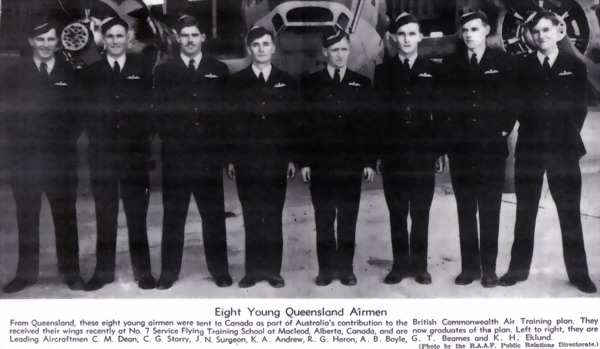
Date – 25th April 1943
Location – Horsehill Tor. Sk 09344 84337
Republic P-47C Thunderbolt 41-6227.
United States Army Air Force, 56th Fighter Group, 63rd Fighter Squadron.
Based at RAF Horsham St. Faith.
Pilot – Second Lieutenant John E. Coenen
.jpg) The official mishap report (as USAAF accident reports are termed ) states “took off from Speke to fly an administrative flight to Horsham St. Faith. Takeoff was at approximately 1910. weather was forecast 2,500 to 3,000 over the mountains with one third sky cover from there on to the destination. However when he got to the mountains, the clouds were lower than forecast. When he turned around to return to Burtonwood, he inadvertently flew into clouds and lost control of the aircraft. Lt Coenen bailed out and received a fractured spine during the parachute landing. The aircraft was destroyed. The official mishap report (as USAAF accident reports are termed ) states “took off from Speke to fly an administrative flight to Horsham St. Faith. Takeoff was at approximately 1910. weather was forecast 2,500 to 3,000 over the mountains with one third sky cover from there on to the destination. However when he got to the mountains, the clouds were lower than forecast. When he turned around to return to Burtonwood, he inadvertently flew into clouds and lost control of the aircraft. Lt Coenen bailed out and received a fractured spine during the parachute landing. The aircraft was destroyed.
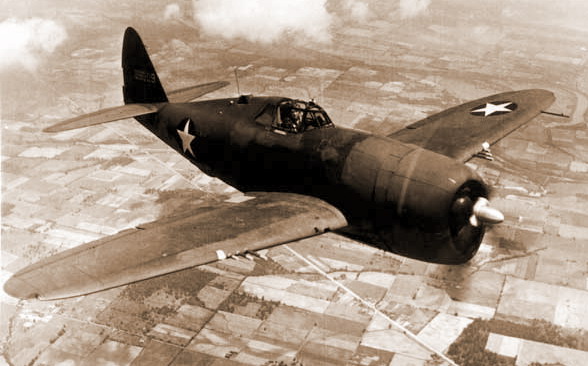 Coenen had flown to Liverpool’s Speke airfield to collect some spare parts, on the homeward flight he encountered low cloud and bad weather. He contacted the American base at Burtonwood and received permission to divert there. But whilst making his turn in cloud lost control of the aircraft as it began to spin. Baling out of a spinning aircraft was extremely difficult. His parachute was snagged and torn by the aircraft and he fell very quickly into thick cloud. He hit the ground hard and hurt his back, but survived. The aircraft struck the ground and exploded in flame and thick smoke. Some hikers who had witnesses Conan’s descent rushed to his aid carrying him on a gate to Lee Farm. Some small melted pieces remain at the site of the crash. Coenen had flown to Liverpool’s Speke airfield to collect some spare parts, on the homeward flight he encountered low cloud and bad weather. He contacted the American base at Burtonwood and received permission to divert there. But whilst making his turn in cloud lost control of the aircraft as it began to spin. Baling out of a spinning aircraft was extremely difficult. His parachute was snagged and torn by the aircraft and he fell very quickly into thick cloud. He hit the ground hard and hurt his back, but survived. The aircraft struck the ground and exploded in flame and thick smoke. Some hikers who had witnesses Conan’s descent rushed to his aid carrying him on a gate to Lee Farm. Some small melted pieces remain at the site of the crash.
Coenen qualified as a pilot 26th April 1942 and had 484 hours flying time at the time of the “mishap”.
Despite his injuries Coenen continued to fly and on the 27th of September shot down two Focke – Wulf 190s whilst escorting a bombing mission to Emden. He was later forced to retire from flying because of the effects of his spinal injuries.
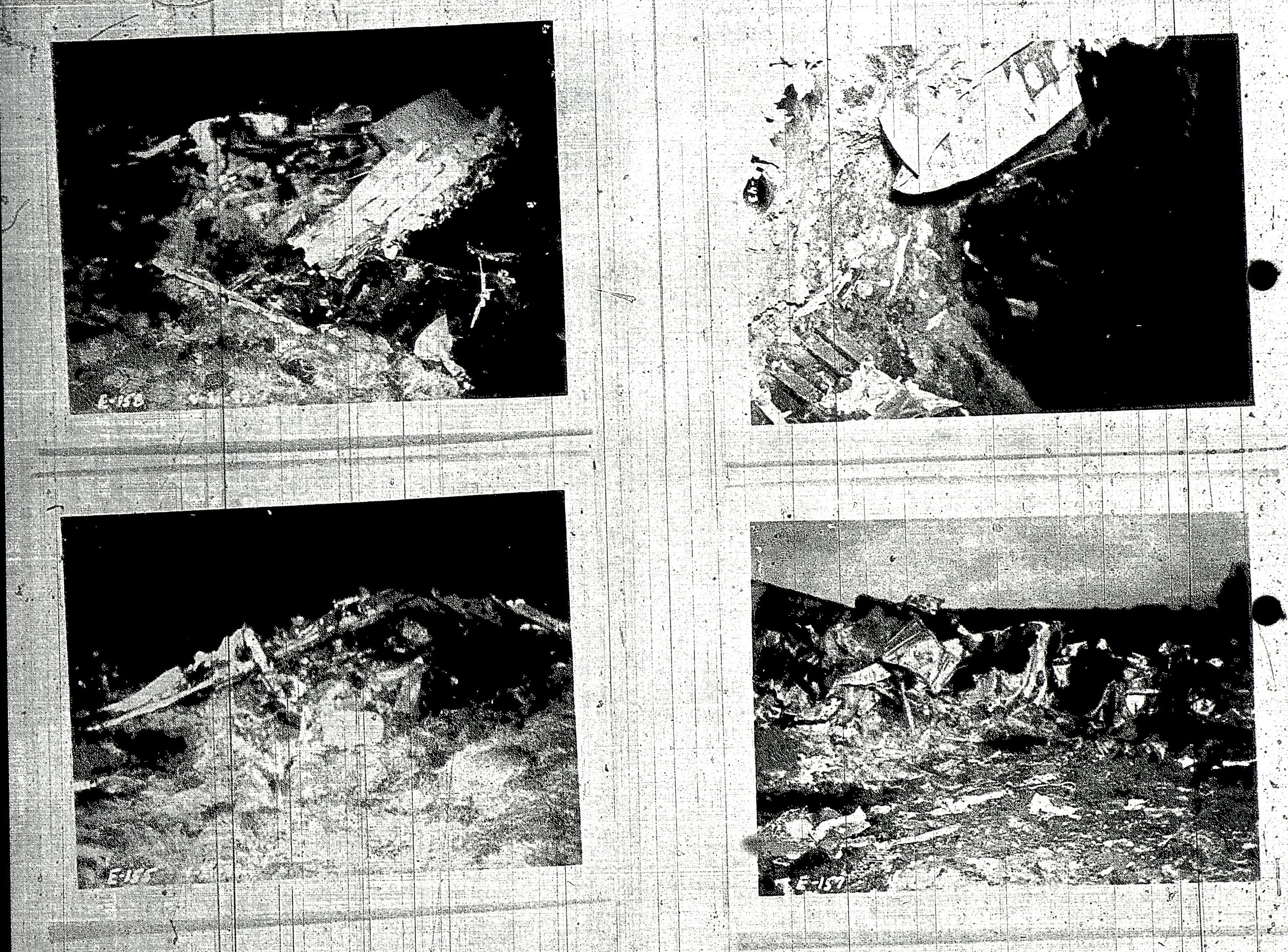
Date – 11th October 1944
Location – Mill Hill, above Little Hayfield. Sk 05731 90583
Consolidated Vultee B24J Liberator 42-52003
United States Army Air Force, 27th Air Transport Group, 310 Ferrying Squadron
Based at 1st Base Air Depot Burtonwood.
Pilot – Creighton R. Houpt, USAAF
Flight Engineer – Staff Sergeant Jerome M. Najvar, USAAF
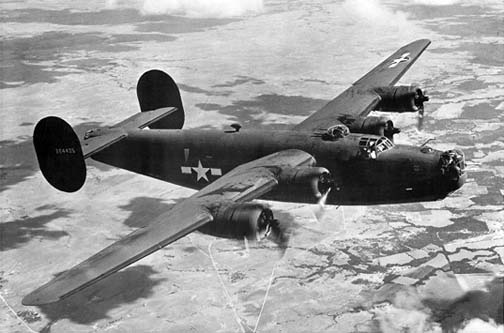 The Liberator was the unsung hero of the 8th Army Air Force, overshadowed in he public mind, by the mystic which surrounds the B-27 Flying Fortress. The B-24 took part in many of the most important USAAF actions of World War Two. Over 18,000 Liberators were built during the war. Production becoming so efficient that one aircraft was completed every fifty six minutes. The Liberator was the unsung hero of the 8th Army Air Force, overshadowed in he public mind, by the mystic which surrounds the B-27 Flying Fortress. The B-24 took part in many of the most important USAAF actions of World War Two. Over 18,000 Liberators were built during the war. Production becoming so efficient that one aircraft was completed every fifty six minutes.
The official Mishap report states “Aircraft was wrecked at summit of hill as pilot found himself with too little altitude to clear approximately 2,000 feet ridges in wild moors along his course.”
And goes on to say,
“ on notification of this Depot by the pilot of this B-24J aircraft, AF No. 42-52003 which crashed near Little Hayfield at 1045 hours, 11th October 1944, ambulance was dispatched to pick up the two crew members and military police sent to locate and guard the aircraft. When the aircraft was found it was deemed impossible to salvage because of the inaccessible location. On authority granted by Maintenance Division Headquarters, ASC US Strategic Air Forces in Europe (MF 00483, 14th October 1944) a party was sent to destroy the wrecked aircraft, which was then abandoned.
In opinion of this committee the pilot was in error by holding the altitude of the ship at 2,800 feet on instruments, which would allow as safety margin less than 800 feet clearance of the ridges. The aircraft and instruments may be considered to have operated satisfactorily and no necessity for any attempt to get below the overcast appears justifiable.”
Separately are two telegrams “predicated upon your report of impossibility to salvage Aircraft B-24J, AF Number 42-52003 permission granted to abandon and destroy subject aircraft.
Lieutenant Colonel Martin L. Burtaal”
And, “14th October 1944, the undersigned witnessed complete destruction of B-24J aircraft AF No. 42-52003, which crashed on 11th October 1944 near Little Hayfield. The remains of aircraft were abandoned in nearly inaccessible country where the crash took place, after destruction on 15th October 1944.
Lieutenant Colonel Joseph S. Chance.”
This brand new aircraft was on a ferrying flight crewed by two ferrying officers a pilot and engineer as was the usual practice. Aircraft would on arrival be stored and maintained at Base Air Depot Burtonwood until required by operational squadrons. Half cloud was forecast at 1,000 feet with visibility of 3,900 yards. The pilot lost visual contact with the ground and in conditions of rough air and poor visibility decided to try to fly below cloud cover to re-establish it. As the aircraft descended it struck the high ground near the summit of Mill Hill and slid through peat and vegetation. The aircraft was badly damaged, but far from destroyed. Both men were cut and bruised and Houpt had a broken jaw, but otherwise they were unhurt, except perhaps for their pride. They descended the moors, following the stream of Hollingworth clough until eventually reaching the road at Chunal, where a passing car took them to the Grouse public House, so they could phone their base. The rest of the story is contained in the official report. I’ve always felt rather sorry for the Military Policemen setting off from the Grouse, onto the foggy wet moors in diminishing light without a clue where the aircraft might be.
.jpg) 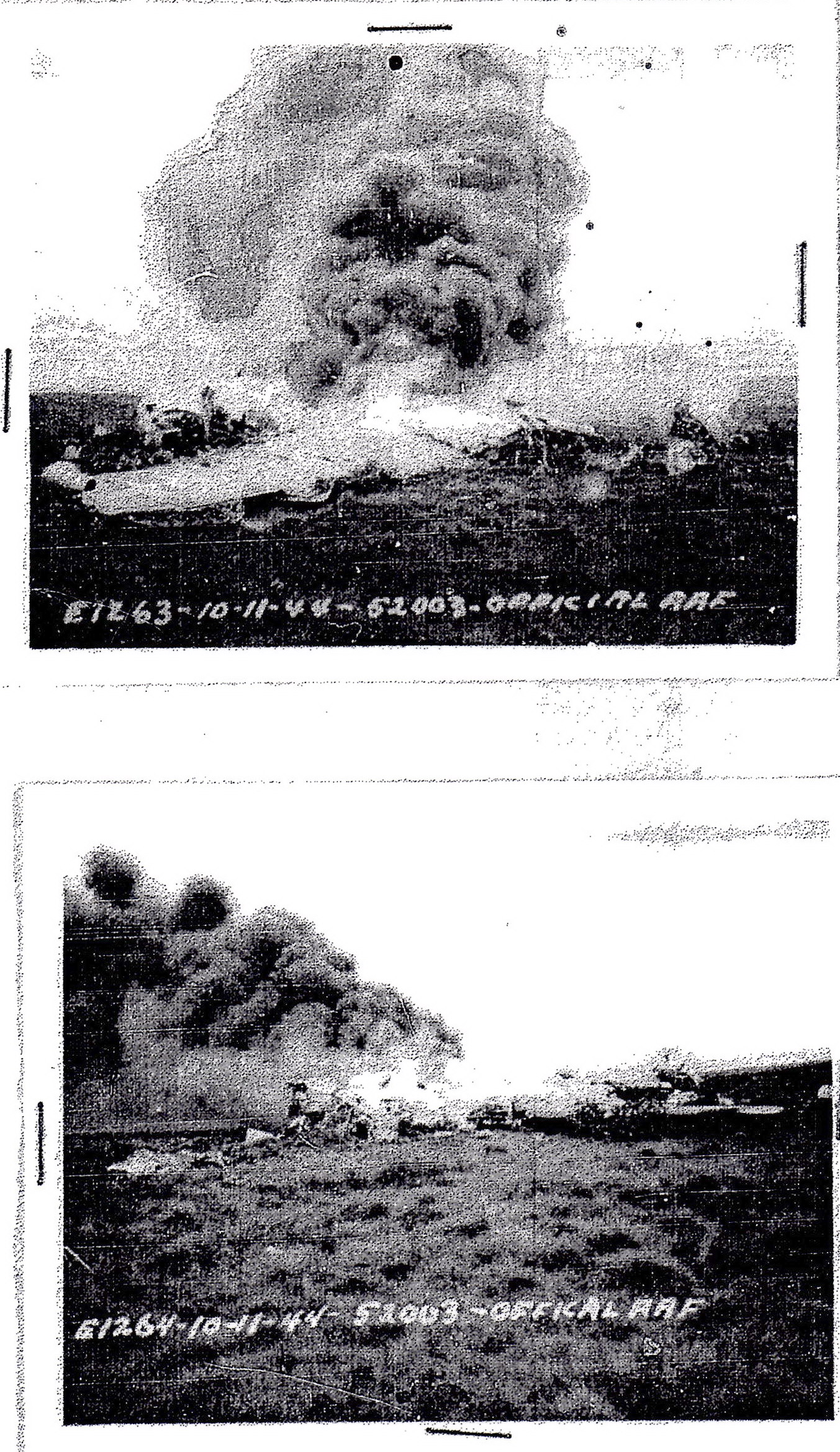
Date – 29th May 1945
Location – Plainsteads Farm, Monks Road. Sk02620 91369
North American P-51D Mustang 44-64084
USAAF, 4TH fighter Group, 336Squadron.
Pilot – Flight Officer Darnaby Henton Wilhoit, USAAF
The official Mishap report states “Bad weather conditions created hazardous conditions for control flying. The pilot crashed into the mountainside.
0n 29th May 1945 F/O Darnaby H. Wilhoit T-63542, was piloting P-51 aircraft, AF Serial No. 44-64084 on ferry flight from Debden to Speke when at 10:58 hours accident occurred with fatal results to pilot and complete destruction of aircraft.
The aircraft crashed into the side of a hill under power. The aircraft was completely demolished and the pilot killed. Some few piece of the wreckage were ignited, but wreckage was so widely scattered that no serious fire took place.”
Following Germany’s surrender on the 8th of May much of the allied resources were being redirected to the war against Japan. This aircraft was part of a flight of twenty three Mustangs being flown to Speke the closest airfield to the Liverpool docks from where they were to be redeployed to the Pacific war.
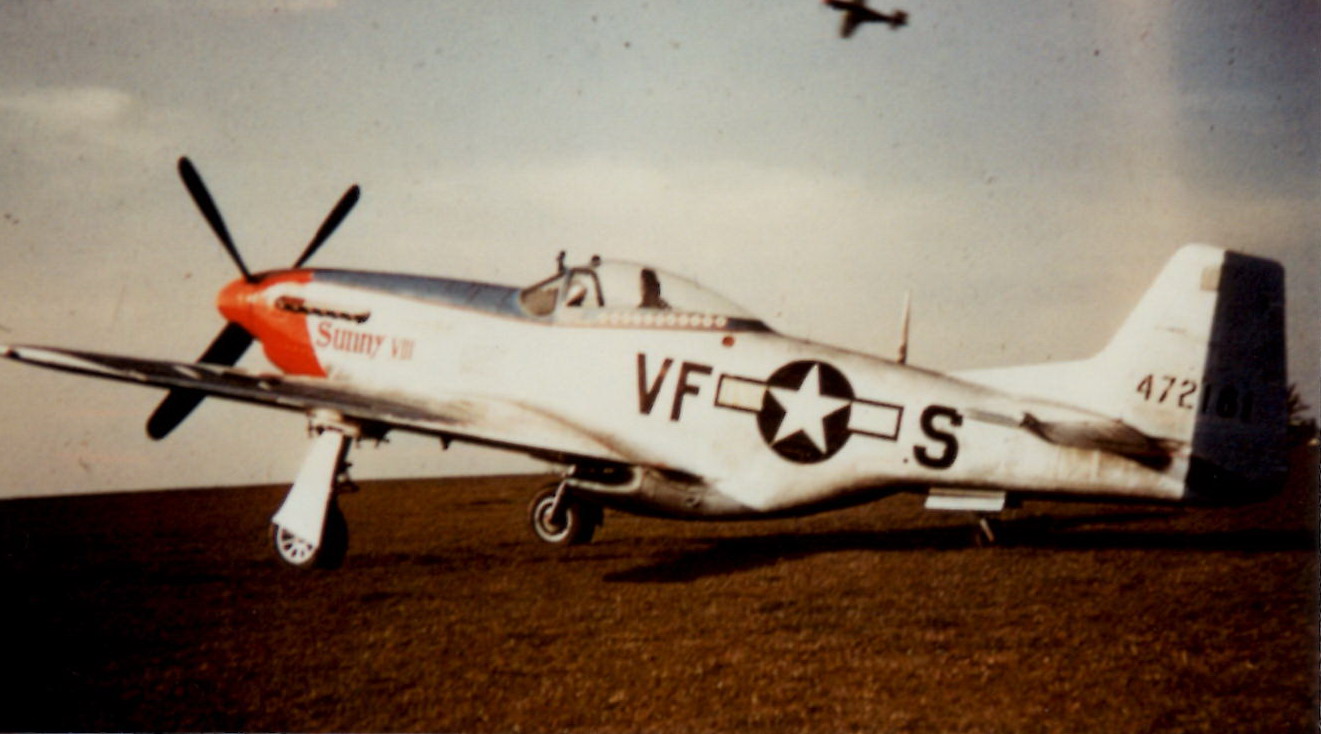 The pilot leading the flight was First Lieutenant Harold H. Frederick, who was to fly the squadrons commanders aircraft “Sunny VIII” an aircraft carrying twelve Swastika’s denoting its pilots skill. The twenty three aircraft left Debden and flew in formation through thick cloud using dead reckoning, which calculated time and speed to give a position on a flight path. Unfortunately due to a microphone fault on one aircraft all communication was lost between the individual aircraft in the flight. The problems really began as the aircraft flying in sections of four tried to let down through the cloud, as they descended the cloud remained unbroken and with poor visibility ahead all aircraft were in danger as they attempted to establish visual contact with the ground. F/O Wilhoit burst through cloud and suddenly seeing the ground tried to pull up, but too late and the aircraft exploded in a devastating blast. The other aircraft in his formation with more warning pulled clear. Locals running to the scene pulled the pilots burnt bible and personnel papers from the fire, but the pilot was beyond their help. Darnaby Wilhoit’s body was recovered with due reverence by the emergency services. Later that same day, with typical American efficiency a ground crew arrived and removed the wreckage from the field. Whilst another claimed the body of their fallen comrade. Thirty miles away the flight leader First Lieutenant Harold H. Frederick died in similar circumstances when his P-51 Mustang “Sunny VIII” hit Castleshaw Moor and exploded. The pilot leading the flight was First Lieutenant Harold H. Frederick, who was to fly the squadrons commanders aircraft “Sunny VIII” an aircraft carrying twelve Swastika’s denoting its pilots skill. The twenty three aircraft left Debden and flew in formation through thick cloud using dead reckoning, which calculated time and speed to give a position on a flight path. Unfortunately due to a microphone fault on one aircraft all communication was lost between the individual aircraft in the flight. The problems really began as the aircraft flying in sections of four tried to let down through the cloud, as they descended the cloud remained unbroken and with poor visibility ahead all aircraft were in danger as they attempted to establish visual contact with the ground. F/O Wilhoit burst through cloud and suddenly seeing the ground tried to pull up, but too late and the aircraft exploded in a devastating blast. The other aircraft in his formation with more warning pulled clear. Locals running to the scene pulled the pilots burnt bible and personnel papers from the fire, but the pilot was beyond their help. Darnaby Wilhoit’s body was recovered with due reverence by the emergency services. Later that same day, with typical American efficiency a ground crew arrived and removed the wreckage from the field. Whilst another claimed the body of their fallen comrade. Thirty miles away the flight leader First Lieutenant Harold H. Frederick died in similar circumstances when his P-51 Mustang “Sunny VIII” hit Castleshaw Moor and exploded.
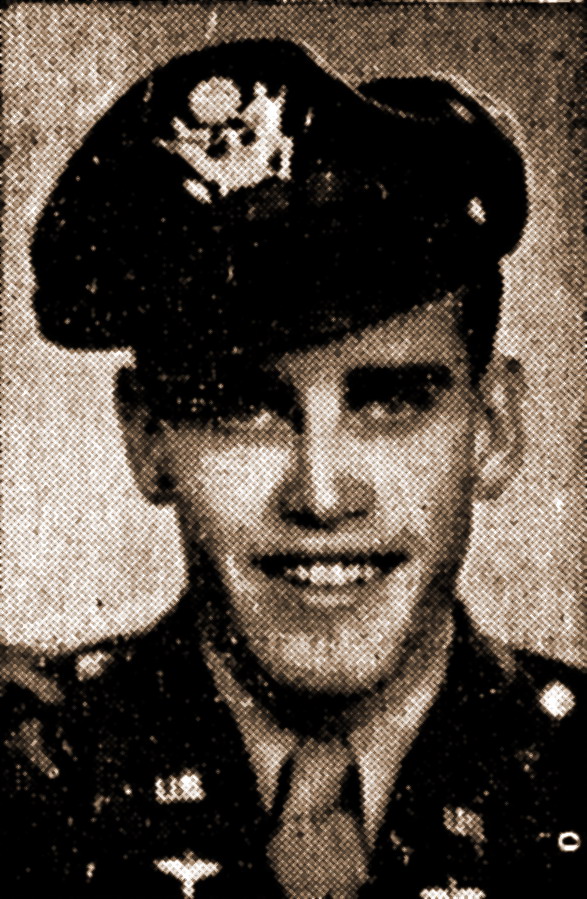 Darnaby Henton Wilhoit was born at Woodford Memorial Hospital on the 22nd of December 1922. Don as he became known to his friends, was the second child of Hiram and Jessie Henton Wilhoit. His mother died a year after his birth. Hiram was a cashier for the Woodford Bank & Trust Company in Versailles and later became State Banking Commissioner. Hiram married Alma Heimiller Craig Feb 22nd 1929. alma had one son William. William was 25 years old when his mother remarried. Don’s stepmother Alma was 46 years old when she married his father. Don was six at the time, he asked her what he was supposed to call her? Alma told him he could call her anything he wanted to. Don asked her if he could call her “Mama” and she said yes and that is what he always called her. She was the only mother Don ever knew. Alma loved him as though he were her own and he loved her. Don became one of the most popular young men in Versailles. A friend remembers “he hated the name Darnaby and was always known as Don. Darnaby was a family name and the name of an aunt who died in Paris, France, in 1921. I don’t know why he chose the airforce but I always knew he would make a “hot” pilot having ridden in an automobile with him.” Darnaby Henton Wilhoit was born at Woodford Memorial Hospital on the 22nd of December 1922. Don as he became known to his friends, was the second child of Hiram and Jessie Henton Wilhoit. His mother died a year after his birth. Hiram was a cashier for the Woodford Bank & Trust Company in Versailles and later became State Banking Commissioner. Hiram married Alma Heimiller Craig Feb 22nd 1929. alma had one son William. William was 25 years old when his mother remarried. Don’s stepmother Alma was 46 years old when she married his father. Don was six at the time, he asked her what he was supposed to call her? Alma told him he could call her anything he wanted to. Don asked her if he could call her “Mama” and she said yes and that is what he always called her. She was the only mother Don ever knew. Alma loved him as though he were her own and he loved her. Don became one of the most popular young men in Versailles. A friend remembers “he hated the name Darnaby and was always known as Don. Darnaby was a family name and the name of an aunt who died in Paris, France, in 1921. I don’t know why he chose the airforce but I always knew he would make a “hot” pilot having ridden in an automobile with him.”
Don’s father Hiram became Kentucky State Banking Commissioner under Governor A.B. Chandler in 1937 and was in office through 1945 when he retired.
Don entered Maropet Hall School September 1929 – 1st grade. Don entered Versailles Elementary School September 1930. entered Bolles Military School at Jacksonville, Fla. September 1936. he attended Bolles for three years. Entered Versailles high school in September 1939, and graduated June 1940 and entered the University of Kentucky in the September. Whilst at University he joined the R.O.J.C – Company C, Third Regiment of the National Society of Pershing Rifles.
Don enlisted in the U.S. Army on December 15th 1942. Inducted at Cincinnati February 24th 1943 he went :-
1. to Miami Beach, Florida for basic training.
2. to North Carolina State College at Raleigh for study.
3. to Nashville, Tennessee for classification – classified as a pilot for air corp.
4. to Maxwell Field, Montgomery, Alabama.
5. to Americus, Georgia for his first flying lessons.
6. to Greenwood, Mississippi for intensive flying training.
7. to Datham, Alabama, Napier Field where he received his wings.
8. to Tallahassee, Florida, flying training.
9. to Mount Myers, Florida, for advanced flying and target practice.
Finally, after a short visit home Don left Winchester, Kentucky by train for Tallahassee, to prepare to be sent overseas. On March 4th 1945 he left Taunton, Massachusetts aboard the boat “West Point” bound for Europe. They landed near Liverpool on the 14th of March.
Don was sent to Debden Field, Cambridge and the 336th fighter Squadron. He completed two combat missions over Germany before the war ended, and after the V.E. Day he piloted an aircraft in the great flypast over London.
On the 11th of June his parents heard of the accident through a call from a girl friend in Florida. She had heard about the crash from a friend of hers that had gotten a letter from a pilot friend of Don’s. his parents got in touch with Senator A.B. Chandler, and were notified by the government three days later. Three days later they received a letter from the chaplain of his post saying his body had been recovered and a full military funeral was held and his remains were buried in the American Cemetery, at Cambridge.
Don’s body was bought back to the United States aboard the army transport “Lawrence Victory” and he now lies at rest in Versailles Cemetery with his family.
My Thanks to Hampton Henton, Alma Craig Mount and others for the above.

Date 23rd November 1945
Location – The Cloughs, Woolpacks, Kinder. Sk 08903 86696
Avro Anson NL185
Headquarters Bomber Command Communication Flight. RAF Halton.
Pilot – Wing Commander Richard Douglas Speare, DSO, DFC and Bar, Croix de Guerre, with Palm.
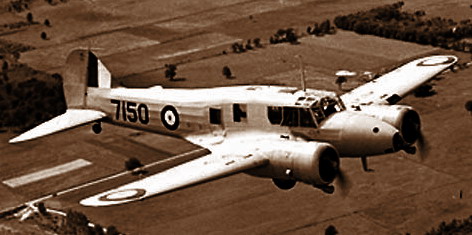 The Avro Anson served as a crew trainer and transport aircraft throughout the war. Though cold and noisy it was generally “a good aircraft” very sturdy and reliable. The Avro Anson served as a crew trainer and transport aircraft throughout the war. Though cold and noisy it was generally “a good aircraft” very sturdy and reliable.
The official accident report states “ Aircraft crashed into hillside in bad visibility – flying seventy degrees off course.
Pilot believing that he was over south coast apparently descended. Tried to avoid hills but was too late. Possibly set compass wrongly , met winds and actual winds nearly identical.
All radio equipment removed from aircraft. Possible contributing factor. Control should have quoted conditions to pilot.
Aircraft flew into ground in bad visibility – lack of radio possibly contributed.
 It seems that despite Wing Commander Speare’s huge flying experience of 2699 hours, he made a mistake setting his course for a ferry flight from Halton to Feltwell. He left Halton at 11.45 and some fifty five minutes later he let down through thick cloud, probably expecting to see the flat lands around RAF Feltwell instead he found himself flying toward the steep edge of Kinder and despite making an attempt to pull up flew into the ground. It appears that Wing Commander Speare was anticipating a spell of leave as reports say that the aircraft contained suitcases the contents of which were scattered amongst the aircraft wreckage. It seems that despite Wing Commander Speare’s huge flying experience of 2699 hours, he made a mistake setting his course for a ferry flight from Halton to Feltwell. He left Halton at 11.45 and some fifty five minutes later he let down through thick cloud, probably expecting to see the flat lands around RAF Feltwell instead he found himself flying toward the steep edge of Kinder and despite making an attempt to pull up flew into the ground. It appears that Wing Commander Speare was anticipating a spell of leave as reports say that the aircraft contained suitcases the contents of which were scattered amongst the aircraft wreckage.
A newspaper report of the time gives details of the discovery of the aircraft. –Whilst out attending to his fathers cattle on Saturday morning Mr Edward Cooper of Edale, saw the wreckage of an Avro Anson aeroplane lying at the foot of Edale Head Rocks on the Clough. Mr Cooper hurried back to the village and telephoned Sergeant Birch of Castleton who organised a rescue party and proceeded by car to Lee Farm. The party then had to traverse the moorland path around by the top of Jacobs Ladder and across the moor to reach the scene. Wreckage was found to be strewn over a wide area, and the pilot of the plane, an R.A.F Officer, who wore several decorations, was found lying on the ground alongside the fuselage. He had apparently been dead for some time when the rescue party arrived. An RAF crash party arrived from Harpur Hill, in charge of two officers, conveyed the body on a stretcher down the hill to a waiting ambulance which had been bought over the rough road from the Lee to the foot of Jacobs Ladder, for transport to Buxton Mortuary. When the crash occurred is not known. No one in the district apparently heard or saw any plane circling about during the previous three days when the hills above the Edale valley were covered in a thick mist and fog.
Major Francis Speare retired from the British Army in India, and moved to Barrie Road, Moordown, Bournemouth, in 1925, with his wife and two children. The children were Richard, who was always Dick to his friends, and his sister Sylvia, who was two or three years older. George Masters, an ex Mayor of Bournemouth remembers “ I was living opposite at that time and was a few years older. Dick started school at the Alma Road School in Winton, and when I first saw him, he was being hounded and bullied by a group of older boys. I sorted them out, and Dick and I became good friends.
Dick moved on to the Grammar School, the Bournemouth School for boys, which I’m pretty sure had an O.T.C. for the RAF Cadet Corps, that was probably Dick’s introduction to the RAF.”
Dick joined the RAF in 1936 and his career took off. He spent the majority of the war attached to 138 squadron, at RAF Tempsford. The squadron flew Halifax bombers, delivering agents and supplies to the continent for the Special Operation Executive (SOE). He was married to Jessica Evelyn (Peggy) Speare, of Scarborough.
Wing Commander Richard Douglas (Dickie) Speare was buried in Bournemouth North Cemetery.
Date 28th December 1945
Location – Brown Knoll. Sk 08189 85204
Airspeed Oxford HN594
Warrant Officer G. W. Robinson – instructor
Flying Officer E. A. Crocker – pilot under training
Flying Officer J. E. Douthwaite – pilot under training
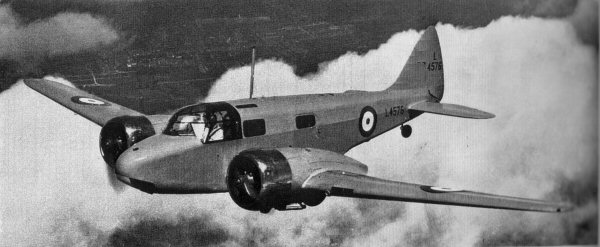 The airspeed Oxford was commonly used throughout the second world war and afterwards to give flying and navigation training to prospective pilots and navigators. Training aircraft, or crews on training flights, account for most crashed aircraft, though by no means all. The airspeed Oxford was commonly used throughout the second world war and afterwards to give flying and navigation training to prospective pilots and navigators. Training aircraft, or crews on training flights, account for most crashed aircraft, though by no means all.
The official explanation of the crash states simply “ Navigation test. It is believed aircraft flew into high ground whilst in cloud.” The aircraft left RAF Station Seighford a little after half past one. The day was foggy and cold with snow lying on the ground, making the point where the sky left the ground hard to perceive. Conditions, which became worse as the aircraft approached Kinder.
Somewhat fortunately, the pilot forced the aircraft into a climb at the last moment and it ploughed into the peat covered hillside bouncing and lessening the impact. Nonetheless the crash was devastating, totally destroying the aircraft. Leaving only the tail intact and recognisable. What followed were some of the most dramatic events to be played out on Kinder Scout.
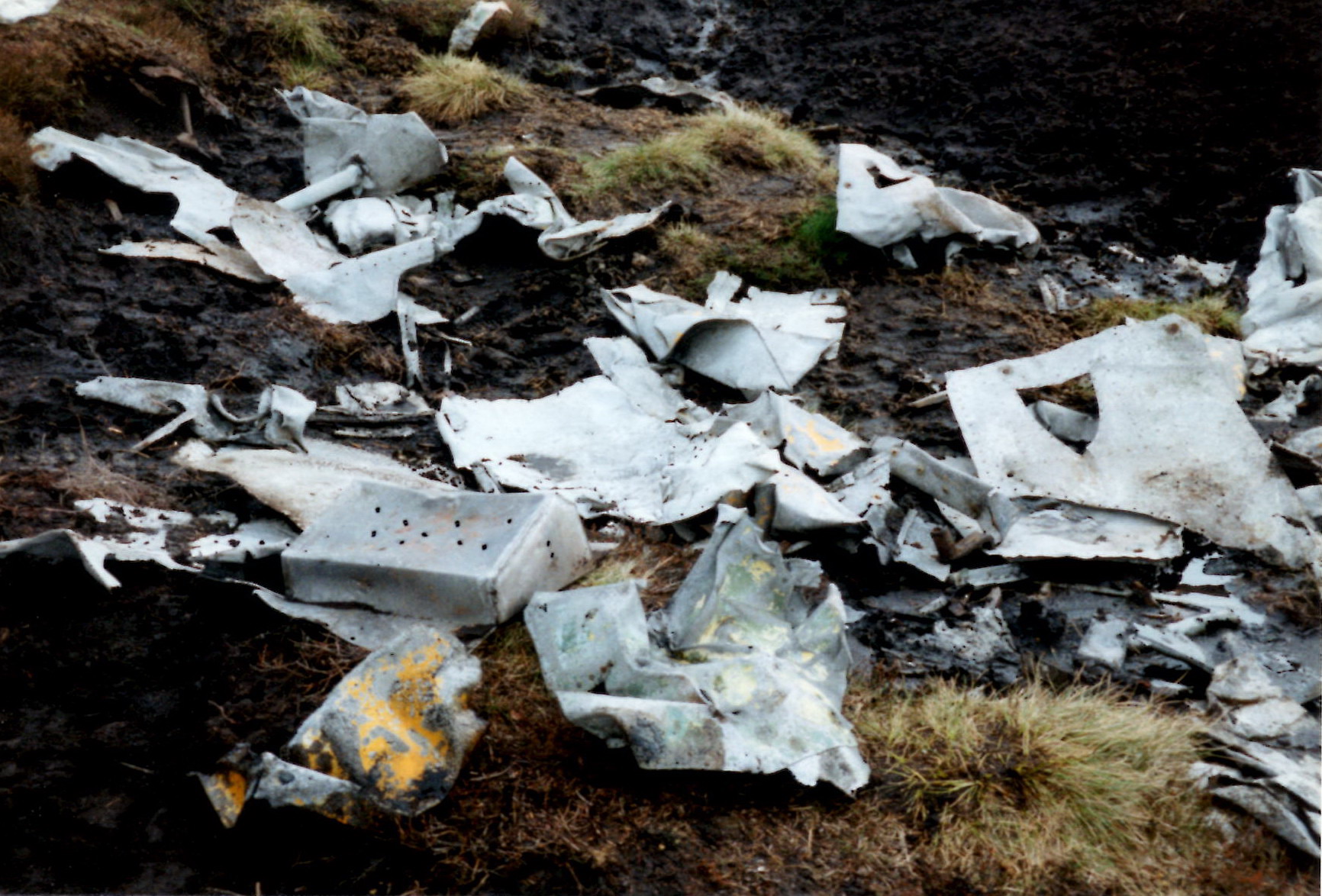 Flying officer Crocker was thrown clear and badly hurt. With both his ankles injured, some reports say broken, and dreadful facial injuries, he staggered back to the main wreckage, to discover his colleagues alive, but badly hurt among the tangled wreck of the Oxford. Both had multiple fractures and other injuries. Crocker wrapped them in parachutes to keep them warm and seeing no alternative, and despite not knowing where he was, and being only able to crawl, he set out to try and get help. With great difficulty, and in great pain, he managed to reached Lee Farm Hostel at Edale, some two miles from the crash. Having made a hazardous descent through bogs and streams, over rocks and down gulleys. Mr John Fox Shirt, warden of the Hostel and his nephew Private Frank Tym, at home on leave from Burma, saw Flying Officer Crocker struggling down the ravine at 4.30 in the afternoon. Rushing to his assistance they heard him gasp “Plane crash, help my mates.” Unfortunately he was to exhausted to give any coherent account of what had happened. Flying officer Crocker was thrown clear and badly hurt. With both his ankles injured, some reports say broken, and dreadful facial injuries, he staggered back to the main wreckage, to discover his colleagues alive, but badly hurt among the tangled wreck of the Oxford. Both had multiple fractures and other injuries. Crocker wrapped them in parachutes to keep them warm and seeing no alternative, and despite not knowing where he was, and being only able to crawl, he set out to try and get help. With great difficulty, and in great pain, he managed to reached Lee Farm Hostel at Edale, some two miles from the crash. Having made a hazardous descent through bogs and streams, over rocks and down gulleys. Mr John Fox Shirt, warden of the Hostel and his nephew Private Frank Tym, at home on leave from Burma, saw Flying Officer Crocker struggling down the ravine at 4.30 in the afternoon. Rushing to his assistance they heard him gasp “Plane crash, help my mates.” Unfortunately he was to exhausted to give any coherent account of what had happened.
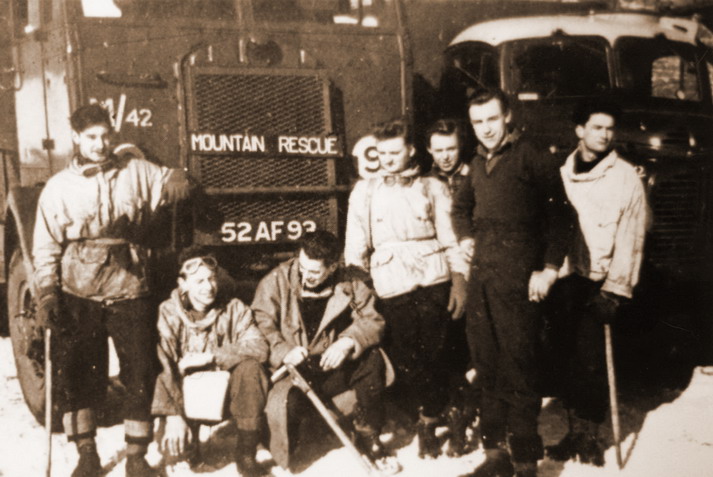 Rescue parties rushed from Castleton to Lee Home Farm with stretchers and first aid equipment, but it was already dark when the search began. Rescue parties consisted of police, RAF personnel, farmers, game keepers and hikers. Prominent in this 17 hour search through heavy fog and frost were the members of the Harpur Hill RAF Mountain Rescue Service led by Flight Lieutenant Crichton, medical officer, who initiated the Mountain Rescue Service locally, and Flight Lieutenant J. W. Taylor. Rescue parties rushed from Castleton to Lee Home Farm with stretchers and first aid equipment, but it was already dark when the search began. Rescue parties consisted of police, RAF personnel, farmers, game keepers and hikers. Prominent in this 17 hour search through heavy fog and frost were the members of the Harpur Hill RAF Mountain Rescue Service led by Flight Lieutenant Crichton, medical officer, who initiated the Mountain Rescue Service locally, and Flight Lieutenant J. W. Taylor.
There were some minor rescues of rescuers during the night as men were often up to their armpits in icy water or struggling across the steep terrain . Flares and verey lights were used to light the area. One party searching Broad clough in the early hours was saved from disaster when a verey light revealed a 50ft gulley into which their stretcher sledge had fallen. The search was abandoned by some, soon after, but resumed again at dawn, by which time a clearer idea of the planes location had been given by Crocker, who was now considerably recovered.
Shouts out of the mist on Brown Knoll were the first indication of the end of the search. Twenty one year old Mr Dakin who had led a party over Kinder Low all night, Mr Shirt and Mr Joe Peacock ran forward and found Flying Officer Douthwaite lying covered in a parachute. He said “Thank God you’ve come, chums; its been a cold night.” Both men received immediate medical attention before being bought down the mountain side in a jeep to a waiting ambulance, which took them and Flying Officer Crocker to the RAF hospital at Wilmslow. Despite their injuries and having lain for 20 hours in freezing temperatures both men made complete recoveries. Flying Officer Edward Crocker, will be better remembered by many as Ted Crocker, one time chairman of the Football Association.
Brown Knoll is a slight prominence to the right of Kinder Scout when viewed from New Mills. Once there its not hard to see where it gets its name from as it is a peat covered hill with a trig point on the summit. Just below the trig point in a gulley lie the aluminium remains of the aircraft.
Date – 14th January 1952
Location – The Cloughs, Woolpacks, Kinder. Sk 08895 86835
North American Harvard FT415
No. 22 Flying Training School, RAF Syerston.
Pupil Pilot – Midshipman Brian Farley, Royal Naval Air Service
The official accident report states “ was seen by witness flying at a height of 30 to 40 feet and appeared to be following the railway line on being confronted by a tunnel pilot put the aircraft into a steep climb, but was unable to clear a hill. The court were of the opinion that the pilot did not complete cross country exercise, but attempted to fly to Stockport which was his home town. Pilot failed to have his flight plan checked before take off. Fire on impact gear not operated.”
 Twenty year old Farley took off at 09:56 on a multi legged navigational exercise. Whether he chose to try and over fly his own town or not will never be known. He certainly wouldn’t be the first pilot to die in the attempt. It seems he was following the Sheffield to Manchester railway lines when he flew into the Edale cul-de-sac. As the rails disappeared into Cowburn tunnel Farley tried to pull out of the valley banking right and climbing sharply. He almost made it hitting the side of Kinder only meters from the top. Twenty year old Farley took off at 09:56 on a multi legged navigational exercise. Whether he chose to try and over fly his own town or not will never be known. He certainly wouldn’t be the first pilot to die in the attempt. It seems he was following the Sheffield to Manchester railway lines when he flew into the Edale cul-de-sac. As the rails disappeared into Cowburn tunnel Farley tried to pull out of the valley banking right and climbing sharply. He almost made it hitting the side of Kinder only meters from the top.
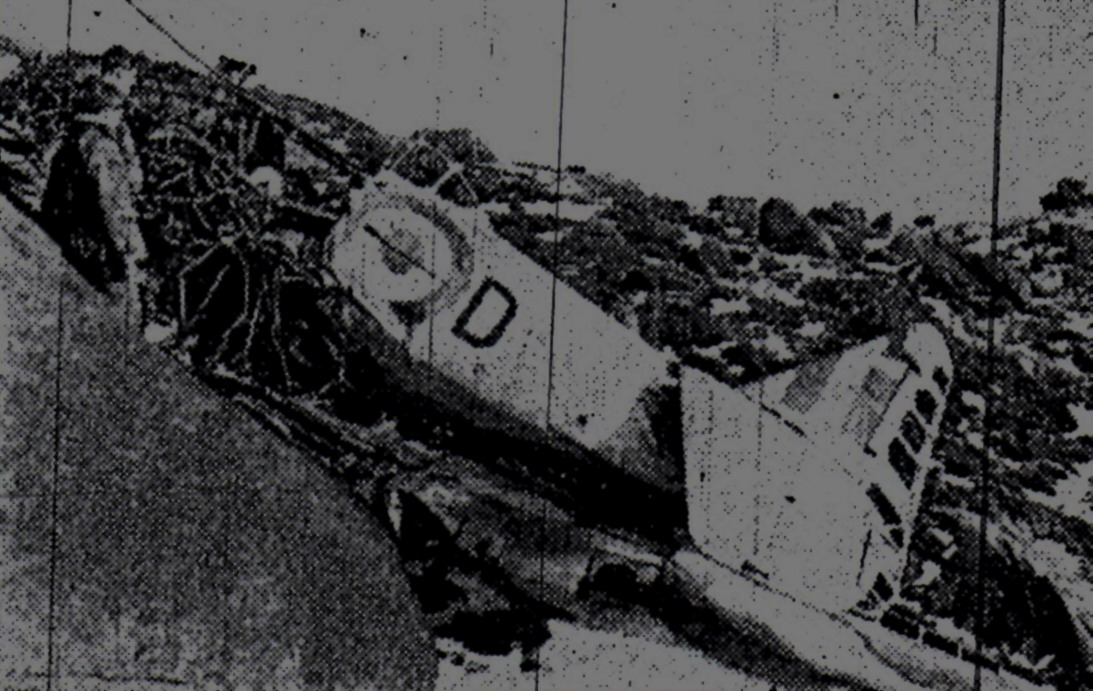 A newspaper report of the time gives a description of the finding of the aircraft “Crossing Kinder Scout from Edale to Hayfield, on Saturday afternoon, four Manchester hikers found a crashed plane. The aircraft, a two seater single engined Harvard trainer had been missing for five days. News of the crashed plane was passed by the hikers to Mr. Forrester, of the Tunstead Guest House, who telephoned the police at Hayfield. A newspaper report of the time gives a description of the finding of the aircraft “Crossing Kinder Scout from Edale to Hayfield, on Saturday afternoon, four Manchester hikers found a crashed plane. The aircraft, a two seater single engined Harvard trainer had been missing for five days. News of the crashed plane was passed by the hikers to Mr. Forrester, of the Tunstead Guest House, who telephoned the police at Hayfield.
Immediately a police search party was formed – Sergeant Oldham (Glossop) Constable F. Starkey (New Mills), Constable A. Norman (Hayfield) and Constable A. Seckington (Charlesworth).
Leaving the police car at Coldwell Clough Farm, Kinder, they were joined by Mr. Harry Hallam and James Waterhouse, whose intimate knowledge of the moorland proved invaluable. After battling for two hours over rough treacherous ground and snow drifts as deep as seven feet, the rescue party conducted a close search of the area around Jacobs Ladder. Apart from hand torches they had a paraffin pressure lamp which proved of great assistance. It was 8-20 p.m. when Mr. Hallam, Mr. Waterhouse and Constable Starkey found the yellow coloured plane. Both wings had been ripped away. The front of the plane, buried in the hillside was extensively damaged. The rear was only slightly damaged. Part of the plane was burned. Word was passed to the RAF Mountain Rescue Squad searchers who were in the vicinity, approaching the crash from the Edale side, they were directed to the wreckage. The RAF men took the body from the cockpit and it was removed by sledge over deep snow to Bamford.
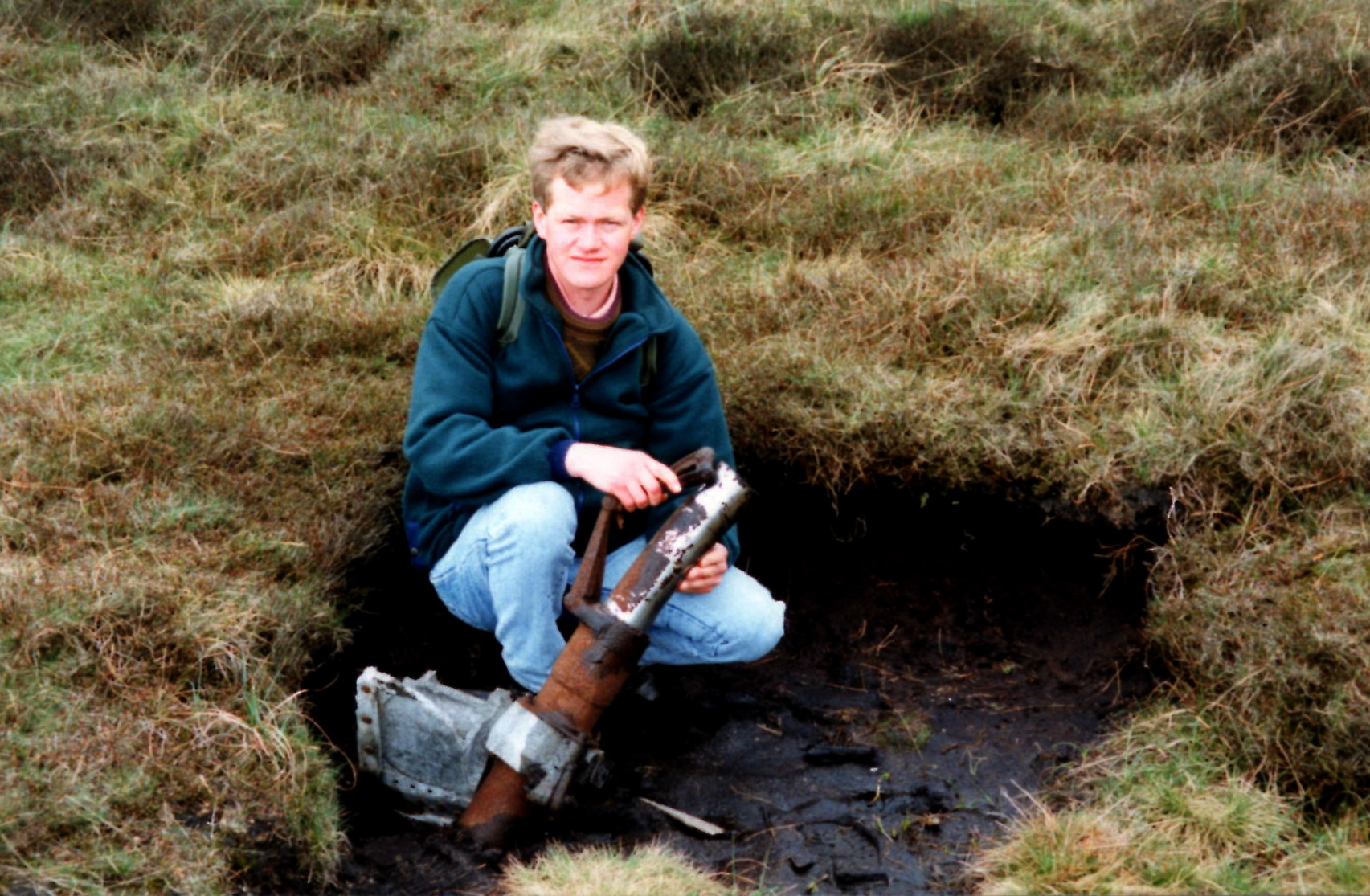 At four o’clock on Sunday morning less than four hours after he had returned to New Mills Police Station Constable Starkey, who used to be stationed at Hayfield, again made the climb to the crashed plane. With him was Motor Patrol Constable Marshall of Buxton they escorted to the aircraft two RAF Police from Wilmslow, who made a search for means of identifying the body. At four o’clock on Sunday morning less than four hours after he had returned to New Mills Police Station Constable Starkey, who used to be stationed at Hayfield, again made the climb to the crashed plane. With him was Motor Patrol Constable Marshall of Buxton they escorted to the aircraft two RAF Police from Wilmslow, who made a search for means of identifying the body.
Date – 22nd July 1954
Location – Ashop Moor
North American F-86 Sabre XD707 Sk 07268 90236
Piloted by Flying Officer James D. Horne.
North American F-86 Sabre XD730
Piloted by Flight Lieutenant Alan Green.
These two aircraft from No 66 Squadron were part of a flight of four taking part in Exercise Dividend, the largest exercise staged by the RAF since the Second World War. When the exercise ended on the 25th of July the RAF had lost six aircraft two of them on Kinder.
 The official explanation of the loss says in brief matter of fact terms “flying in pairs a section of four aircraft commenced a let down from 38,000 feet to 12,000 feet aircraft entered cloud and on descending to 5,000 feet, the leader ordered section not to go below 3,000 feet on that heading. This pilot (Horne), as leader of the second pair, did not acknowledge this message and both aircraft flew into high ground. The official explanation of the loss says in brief matter of fact terms “flying in pairs a section of four aircraft commenced a let down from 38,000 feet to 12,000 feet aircraft entered cloud and on descending to 5,000 feet, the leader ordered section not to go below 3,000 feet on that heading. This pilot (Horne), as leader of the second pair, did not acknowledge this message and both aircraft flew into high ground.
Incident was caused through failure of this pilot, as leader of the second pair, to observe and maintain a safety height. Contributory factor was the failure of pilot to receive instructions about the safety height from his section leader due to a deterioration in the efficiency of his radio, the weakness of which had been notice earlier in the sortie.”
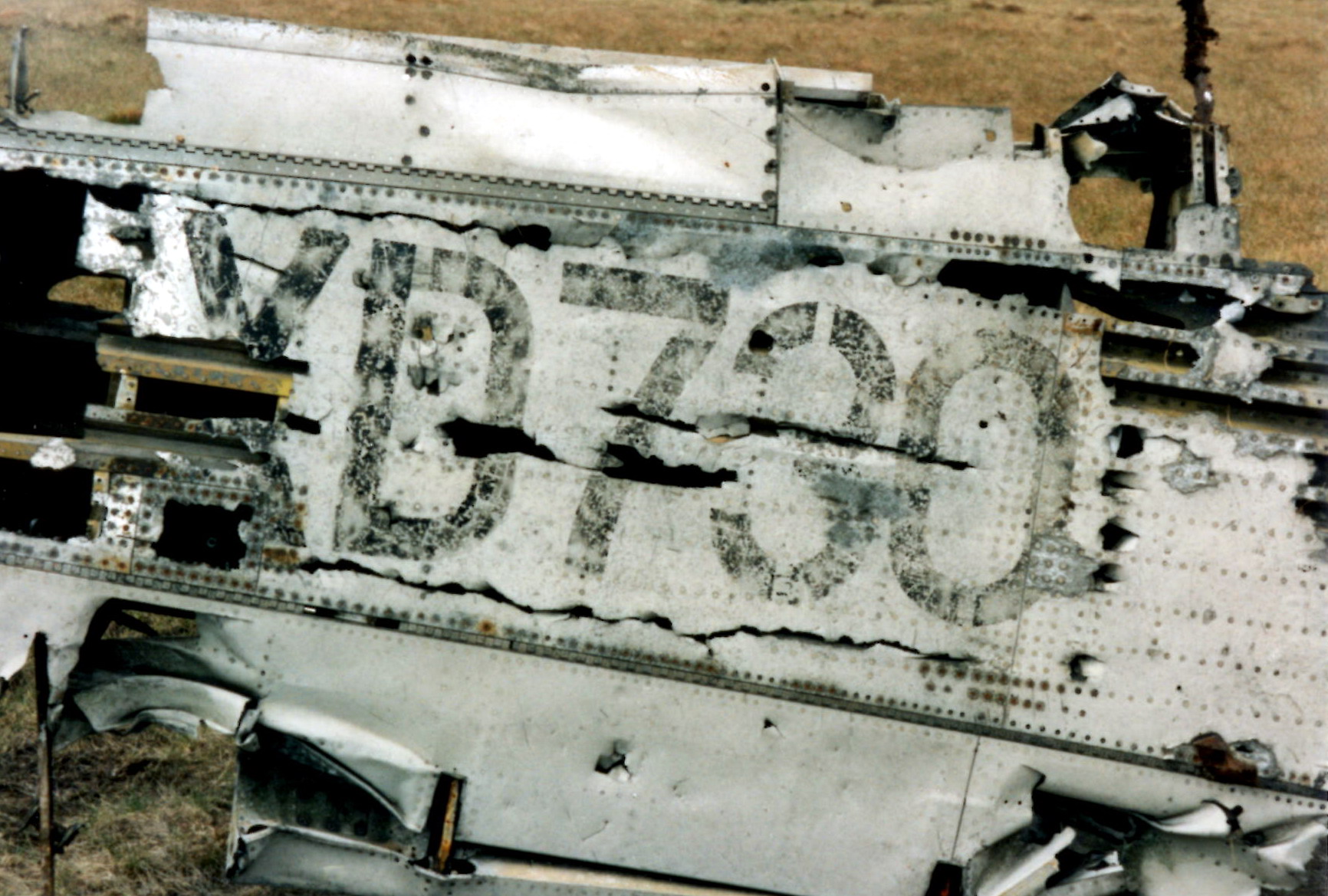 It seems that having received no instructions to the contrary pilots Horne and Green continued their descent from 5,000 feet. The day was foggy to a height of 1,000 feet. Two men climbing near Kinder reservoir saw the aircraft fly over and disappear into the cloud followed by “ a noise like a hundred dustbins being banged together.” The two sabres hit one another in mid air probably as they saw the mass of kinder looming out of the cloud. The aircraft broke up in the air, wreckage falling in a long line across the summit of Kinder and down on to Ashop Moor. It appears the climbers who witnessed the sabres and heard the crash did not raise the alarm, for it was three days before the wreckage was discovered by two ramblers. It seems that having received no instructions to the contrary pilots Horne and Green continued their descent from 5,000 feet. The day was foggy to a height of 1,000 feet. Two men climbing near Kinder reservoir saw the aircraft fly over and disappear into the cloud followed by “ a noise like a hundred dustbins being banged together.” The two sabres hit one another in mid air probably as they saw the mass of kinder looming out of the cloud. The aircraft broke up in the air, wreckage falling in a long line across the summit of Kinder and down on to Ashop Moor. It appears the climbers who witnessed the sabres and heard the crash did not raise the alarm, for it was three days before the wreckage was discovered by two ramblers.
The bodies of the pilots were removed from the desolate site to Whaley Bridge Mortuary by the Mountain Rescue team from RAF Harpur Hill; which was by all accounts a difficult task. At an inquest the bodies were formerly identified by Flying Officer Evans who had travelled from their base at RAF Linton-on-Ouse. He identified Flying Officer Horne by his wrist watch, which had stopped at nine minutes past six. Flying Officer Evans commented that the base had started Distress Procedure at six twenty five on the evening of the accident as both aircraft would have run out of fuel at six thirty.
Large amounts of wreckage remain on the summit of Kinder and below on Ashop Moor.
I have never been able to understand why the accident site was not discovered sooner, but suspect the weather remained wet and foggy making an aerial search impossible. Two Gloster Meteor aircraft crashed a few miles away on Sliddens Moss in 1951, in almost identical circumstances.
Date Sunday 28th July 1957
The RAF’s Magister trainer was developed from the Miles Hawk. It became the RAF’S first low winged monoplane trainer and reversed the trend of the 1930’s being constructed of wood with a ply skinning as opposed to metal. It first entered service in 1937 and remained on strength until 1948. Many of the aircraft released from service were bought by flying clubs, as was the case with this aircraft. The Miles Hawk was first modern aircraft to sell for under £400.
  Location of crash - Kinder Low End.
Location of crash - Kinder Low End. Sk 07368 86688
Miles Hawk (Magister) G-AJSF
Pilot – William Warburton Hall
Thirty seven year old pilot William Warburton Hall failed to obtain a weather report before taking off from Squires Gate Airport, Blackpool. It was this simple oversight concluded the coroner that led to his overshooting his destination at Barton Airport, Manchester, by some twenty miles and fly into a mist covered Kinder Low. A motor salesman Mr Hall was an experienced pilot and a member of the Blackpool and Fylde Club. He met his death on the bleak moorland less than half an hour after taking off from Squires Gate Airport on a flight to the Lancashire Aero Club, at Barton Airport, near Eccles. It was about 1-30 p.m. when he left Blackpool in the single engine Miles Hawk in a 15-minute flight to Barton. But at about 1-55 p.m. Mr and Mrs Jones of Audenshaw out for a days walking on Kinder, heard a plane nearby. Then there was a crash – and the engine stopped.
Mr Jones said that he and his wife had climbed Kinder Scout and were having lunch at the bottom, when they saw a plane coming from the direction of Kinder reservoir. ‘We saw it quite plainly, below the cloud level,’ he said. ‘The pilot made his way toward Kinder Low and then the plane suddenly disappeared.’ Then came a loud crash. Both Mr and Mrs Jones realising what had happened, got to their feet and made the ascent again. After searching for a while in the thick mist, Mr Jones saw the wrecked plane, a single seater, with the petrol tank some distance away from the body of the plane. The pilot was stretched out on the ground and appeared to be dead. Another couple came on the scene and Mr Jones asked them to stay with the machine whilst he and his wife went for help. They made the journey to Tunstead House, near Hayfield and telephoned for the police. Mr Jones then accompanied the police back to the scene.
At a later inquiry into the accident, Constable Donald Childs, of New Mills reported that when he arrived at the crash scene, wreckage was scattered over 60 yards. There had been some difficulty in finding the location of the crash because of low cloud. Among the wreckage, he found some instruments and these were taken to the police station. He also reported that he had found a map with a course plotted between Squires Gate and Barton, lying near the body of the pilot. Mr William Tench, a senior investigator for the Ministry of Transport and Civil Aviation Authority reported to the inquiry that if Hall had cruised at 90 knots the time it would take him to reach Barton would be nineteen and a half minutes. Hall did not obtain a weather report before taking off however, and he could have been unaware that he had a 30-knot tail wind behind him. Using this wind, it would take him twenty-three minutes to get to the scene of the crash, and he could thus overshoot Barton unknowingly. Mr Tench said that according to the map, Hall would be flying on a south-west course, but on impact, he had been facing towards the south-east. He had apparently turned 70 degrees just before crashing, and this might suggest that he had seen the mountainside looming up and had tried to turn away.
OTHER AIRCRAFT IN THE KINDER AREA
I’ll add the aircraft details and crew biographies, as time allows.
Date – 7th May 1940
Location – Mill Cottages, Edale. Sk 13500 85183
Avro Tutor K3308
Date – 21st December 1940
Location – Rushup Edge. Sk 10418 82999
Handley Page Hampden Mk.1 X3154
Date – 3rd July 1941
Location – Below Crowden Tower, Kinder Scout. Sk 09143 87075
Bristol Blenheim MK.4 Z5870
Date – 31st July 1941
Location – Upper Tor, Grindsbrook. Kinder Scout. Sk 11061 87550
Vickers Armstrong Wellington W5719
Date – 30th August 1941
Location – Lords Seat, Rushup Edge. Sk 11230 83450
De Havilland DH85 Leopard Moth AV986
Date – 26th January 1943
Location – Blackden Edge. Sk 12803 87554
Vickers Armstrong Wellington X3348
Date – 5th October 1943
Location – Blackden Edge, Kinder Scout. Sk 13039 87745 (near trig point)
Handley Page Halifax HR727
Date – 10th December 1943
Location – Rushup Edge. Sk 10890 83455
Supermarine Spitfire P7883
Date –11th December 1944
Location – Edale Moor, Kinder Scout. Sk 10123 87866
Avro Anson N9853
Date – 4th March 1945
Location – Rushop Edge. Sk 10944 83827
Airspeed Oxford NM683
Civilian
Date – 30th December 1963
Location – Edale Moor Kinder Scout. Sk 10160 88241
De Havilland DH89 Rapide G-ALBC
Date – 23rd October 1983
Location – Broadlee Bank Tor, Kinder Scout. Sk 11390 86120
Reims Cessna 150M G-BFRP
Mr. Barry Bryant, Pilot instructor
Mr John Steward Bateson, Student pilot
Date – 24th October 1997
Location – Williams Clough, Kinder. Sk 06655 89697
Bell 206B Jet Ranger Helicopter G-ODIL


.jpg) 
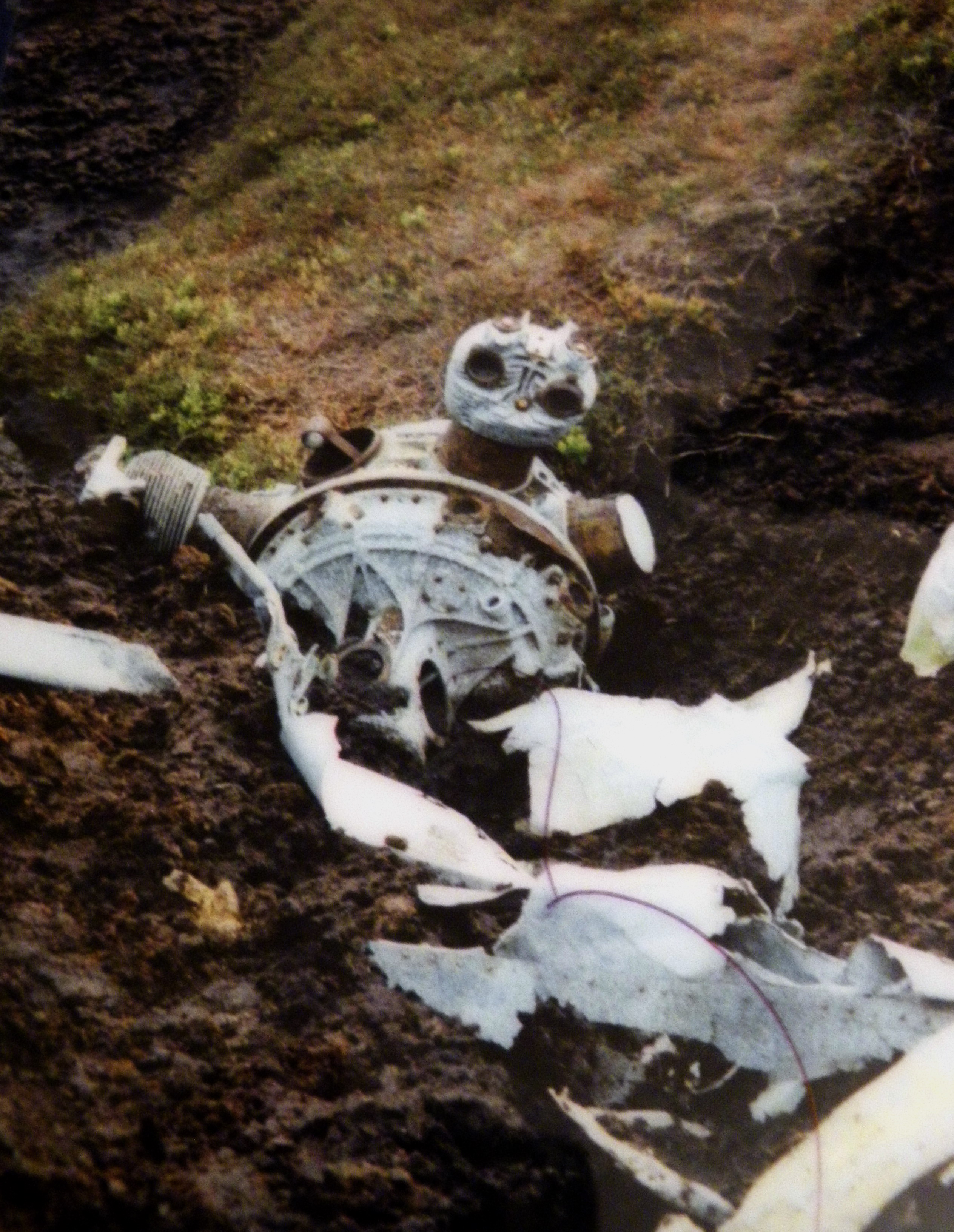
 |







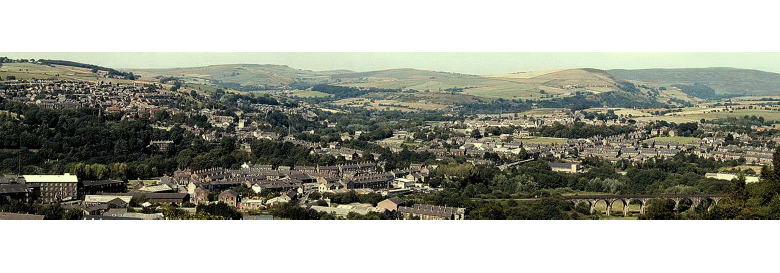


 The route decided upon was Aldergrove, Hilpsford point (south of Barrow), Morecombe, Finningley. I was flying in the inside left position and all went well until we flew over Morecambe at 4000ft. There we encountered what appeared to be very dense sea fog at our altitude. We altered course to roughly Southeast and headed for Finningley. Thereafter conditions became atrocious, visibility was nil, and we could not see anything of the other aircraft in the formation. I asked my wireless operator A. C. Bodenham, to get a bearing from the radio ground station at Finningley. After a short period he came forward to tell me that he was unable to contact Finningley because our trailing aerial had iced up. (It later transpired that the ground station was out of action for annual maintenance on that refreshments at the day). Soon after this I caught a glimpse of our own port wing. It had a very thick covering of ice. Our altitude at that time was 4000ft, and I decided to increase engine power to gain height. At this time, we calculated our E. T. A at Finningley as 1-15pm. I realised we were in something of a predicament. In the nil visibility conditions I considered it unwise to break formation because of the risk of collision with one of the other aircraft which I assumed were still in formation. Although it was cold and miserable, there was no panic. That is until at about12-45pm when my co-pilot Sgt Church, yelled ‘get up’ I remember seeing a dark mass ahead of me and tried to climb quickly, but the heavy icing prevented this. I came to in the midst of burning wreckage, with the frame of the port windshield around my head, and my woollen scarf and fur lined goggles ablaze. Here was snow everywhere I rolled in it to put the flames around my face and eyes out. On getting up I found my right ankle very painful and my right wrist burnt. Snow covered the local rough terrain and there was freezing fog. I hobbled around the blazing wreckage calling the names of my crew members. There was no response. As I extended my search looking for them I found no trace of any of them or their parachutes. However I stumbled on a narrow foot track and found that it led to a wooden shed in which there was live poultry. I reasoned that someone would come along at least daily to feed the chickens. I slumped down on the lee side of the shed. After sometime, I do not remember how long it was, I heard voices and shouts in the distance. I screamed out where I was and they quickly located me. There were some 4 or 5 young chaps who told me I was near a place called Hebden Bridge. Having advised them that there were three other crew members some of them led me to the local post office. I was in great pain and had difficulty in negotiating stone walls so one of them supported me. I suppose the appalling condition of my face upset them somewhat. When we reached the post office Mrs Alathea Johnson the postmistress took one look at me and turned all the mirrors in the place to the wall. She led me to a room at the back, laid me on a sofa and applied lint coverings to my face, right wrist and right ankle. She also told me that I would have to wait awhile for an ambulance because the only one available had gone as near as possible to the crash site in the hope of finding other survivors. When the ambulance came to pick me up I was told that Sgt Church was in it. He was obviously in great pain and died on the way to Halifax Royal Infirmary. I do not know what became of the other two-crew members except that they were both killed. One body was found by civilian rescuers beside the burning aircraft. The other was recovered from the wreckage). Only one aircraft reached Finningley. It was piloted by Sgt Biddulph a great friend of mine. He later told me that having estimated he was clear of the Pennines he made a forced landing in fog conditions in what proved to be a field in Lincolnshire. A local farmer told him where he was and he decided to head for Finningley narrowly missing overhead electricity cables in the process. Having pressed on in bad visibility he decided that he had had enough and would put down in the first large field he saw. This he did. Only after landing did he discover that he had landed at RAF Finningley!
The route decided upon was Aldergrove, Hilpsford point (south of Barrow), Morecombe, Finningley. I was flying in the inside left position and all went well until we flew over Morecambe at 4000ft. There we encountered what appeared to be very dense sea fog at our altitude. We altered course to roughly Southeast and headed for Finningley. Thereafter conditions became atrocious, visibility was nil, and we could not see anything of the other aircraft in the formation. I asked my wireless operator A. C. Bodenham, to get a bearing from the radio ground station at Finningley. After a short period he came forward to tell me that he was unable to contact Finningley because our trailing aerial had iced up. (It later transpired that the ground station was out of action for annual maintenance on that refreshments at the day). Soon after this I caught a glimpse of our own port wing. It had a very thick covering of ice. Our altitude at that time was 4000ft, and I decided to increase engine power to gain height. At this time, we calculated our E. T. A at Finningley as 1-15pm. I realised we were in something of a predicament. In the nil visibility conditions I considered it unwise to break formation because of the risk of collision with one of the other aircraft which I assumed were still in formation. Although it was cold and miserable, there was no panic. That is until at about12-45pm when my co-pilot Sgt Church, yelled ‘get up’ I remember seeing a dark mass ahead of me and tried to climb quickly, but the heavy icing prevented this. I came to in the midst of burning wreckage, with the frame of the port windshield around my head, and my woollen scarf and fur lined goggles ablaze. Here was snow everywhere I rolled in it to put the flames around my face and eyes out. On getting up I found my right ankle very painful and my right wrist burnt. Snow covered the local rough terrain and there was freezing fog. I hobbled around the blazing wreckage calling the names of my crew members. There was no response. As I extended my search looking for them I found no trace of any of them or their parachutes. However I stumbled on a narrow foot track and found that it led to a wooden shed in which there was live poultry. I reasoned that someone would come along at least daily to feed the chickens. I slumped down on the lee side of the shed. After sometime, I do not remember how long it was, I heard voices and shouts in the distance. I screamed out where I was and they quickly located me. There were some 4 or 5 young chaps who told me I was near a place called Hebden Bridge. Having advised them that there were three other crew members some of them led me to the local post office. I was in great pain and had difficulty in negotiating stone walls so one of them supported me. I suppose the appalling condition of my face upset them somewhat. When we reached the post office Mrs Alathea Johnson the postmistress took one look at me and turned all the mirrors in the place to the wall. She led me to a room at the back, laid me on a sofa and applied lint coverings to my face, right wrist and right ankle. She also told me that I would have to wait awhile for an ambulance because the only one available had gone as near as possible to the crash site in the hope of finding other survivors. When the ambulance came to pick me up I was told that Sgt Church was in it. He was obviously in great pain and died on the way to Halifax Royal Infirmary. I do not know what became of the other two-crew members except that they were both killed. One body was found by civilian rescuers beside the burning aircraft. The other was recovered from the wreckage). Only one aircraft reached Finningley. It was piloted by Sgt Biddulph a great friend of mine. He later told me that having estimated he was clear of the Pennines he made a forced landing in fog conditions in what proved to be a field in Lincolnshire. A local farmer told him where he was and he decided to head for Finningley narrowly missing overhead electricity cables in the process. Having pressed on in bad visibility he decided that he had had enough and would put down in the first large field he saw. This he did. Only after landing did he discover that he had landed at RAF Finningley! Some of the villagers of Edale were awakened by the sound of the engines of a low flying aircraft passing overhead. Others had already seen very lights been shot from the aircraft toward the ground in an apparent attempt by the crew to establish their height. The summit of Broadlee Bank Tor was shrouded in mist, as were the heights of kinder scout. The Heyford smashed through a dry stonewall and careered up the slope of the tor in flames. Some of the locals from the village struggled up the slope to aid the crew, but when they arrived they found the aircraft burning fiercely, escaping fuel had caused fire all around. Two bodies were found on the ground near the wreckage and nearby them lay an RAF instruction book. A thick mist still covered the scene of the accident the following morning as the bodies of the crew were carried down to the village. The small and sombre procession carefully picking their way through the mist, three of the bodies borne on stretchers, and three on a horse drawn sled. The bodies of the airmen were housed in a large shed at the rear of the Nags Head Hotel. Today it is still possible to see the point were the Heyford struck the wall, which was never rebuilt. A thirty-foot section is spread onto the moor behind, up toward a point where the peat was burnt away down to the rock below. Only a few fragments of the massive tangled frame of the Heyford now remain.
Some of the villagers of Edale were awakened by the sound of the engines of a low flying aircraft passing overhead. Others had already seen very lights been shot from the aircraft toward the ground in an apparent attempt by the crew to establish their height. The summit of Broadlee Bank Tor was shrouded in mist, as were the heights of kinder scout. The Heyford smashed through a dry stonewall and careered up the slope of the tor in flames. Some of the locals from the village struggled up the slope to aid the crew, but when they arrived they found the aircraft burning fiercely, escaping fuel had caused fire all around. Two bodies were found on the ground near the wreckage and nearby them lay an RAF instruction book. A thick mist still covered the scene of the accident the following morning as the bodies of the crew were carried down to the village. The small and sombre procession carefully picking their way through the mist, three of the bodies borne on stretchers, and three on a horse drawn sled. The bodies of the airmen were housed in a large shed at the rear of the Nags Head Hotel. Today it is still possible to see the point were the Heyford struck the wall, which was never rebuilt. A thirty-foot section is spread onto the moor behind, up toward a point where the peat was burnt away down to the rock below. Only a few fragments of the massive tangled frame of the Heyford now remain. 

 Sergeant (pilot) Royal (Roy) George Heron. RAAF. Age 25. Son of Mr and Mrs J. Heron of Silent Grove, Queensland, Australia. Commemorated Manchester Southern Cemetery. Roy lived with his parents, brother Jim and sister Joyce on a Sugar Cane Farm in an area known as Silent Grove, near Mackay. Roys father and mother were very early settlers in the district, sometime in the 1920's. They remained until they sold their property at the end of the war. Roy was born at Mackay and educated at Mackay State School. On leaving school he entered Gatton Agricultural College were he took a course in general agriculture. While at college he gained the junior championship for athletics in 1931. On completion of his course he returned home to assist his father on the farm. He joined the RAAF on December 3, 1940, and received his training in New Zealand and Canada. His brother Jim was also in the RAAF. Roy is Commemorated on an Honour Board in the district war Memorial Hall of a Queensland township named Calen.
Sergeant (pilot) Royal (Roy) George Heron. RAAF. Age 25. Son of Mr and Mrs J. Heron of Silent Grove, Queensland, Australia. Commemorated Manchester Southern Cemetery. Roy lived with his parents, brother Jim and sister Joyce on a Sugar Cane Farm in an area known as Silent Grove, near Mackay. Roys father and mother were very early settlers in the district, sometime in the 1920's. They remained until they sold their property at the end of the war. Roy was born at Mackay and educated at Mackay State School. On leaving school he entered Gatton Agricultural College were he took a course in general agriculture. While at college he gained the junior championship for athletics in 1931. On completion of his course he returned home to assist his father on the farm. He joined the RAAF on December 3, 1940, and received his training in New Zealand and Canada. His brother Jim was also in the RAAF. Roy is Commemorated on an Honour Board in the district war Memorial Hall of a Queensland township named Calen. 
.jpg) The official mishap report (as USAAF accident reports are termed ) states “took off from Speke to fly an administrative flight to Horsham St. Faith. Takeoff was at approximately 1910. weather was forecast 2,500 to 3,000 over the mountains with one third sky cover from there on to the destination. However when he got to the mountains, the clouds were lower than forecast. When he turned around to return to Burtonwood, he inadvertently flew into clouds and lost control of the aircraft. Lt Coenen bailed out and received a fractured spine during the parachute landing. The aircraft was destroyed.
The official mishap report (as USAAF accident reports are termed ) states “took off from Speke to fly an administrative flight to Horsham St. Faith. Takeoff was at approximately 1910. weather was forecast 2,500 to 3,000 over the mountains with one third sky cover from there on to the destination. However when he got to the mountains, the clouds were lower than forecast. When he turned around to return to Burtonwood, he inadvertently flew into clouds and lost control of the aircraft. Lt Coenen bailed out and received a fractured spine during the parachute landing. The aircraft was destroyed. Coenen had flown to Liverpool’s Speke airfield to collect some spare parts, on the homeward flight he encountered low cloud and bad weather. He contacted the American base at Burtonwood and received permission to divert there. But whilst making his turn in cloud lost control of the aircraft as it began to spin. Baling out of a spinning aircraft was extremely difficult. His parachute was snagged and torn by the aircraft and he fell very quickly into thick cloud. He hit the ground hard and hurt his back, but survived. The aircraft struck the ground and exploded in flame and thick smoke. Some hikers who had witnesses Conan’s descent rushed to his aid carrying him on a gate to Lee Farm. Some small melted pieces remain at the site of the crash.
Coenen had flown to Liverpool’s Speke airfield to collect some spare parts, on the homeward flight he encountered low cloud and bad weather. He contacted the American base at Burtonwood and received permission to divert there. But whilst making his turn in cloud lost control of the aircraft as it began to spin. Baling out of a spinning aircraft was extremely difficult. His parachute was snagged and torn by the aircraft and he fell very quickly into thick cloud. He hit the ground hard and hurt his back, but survived. The aircraft struck the ground and exploded in flame and thick smoke. Some hikers who had witnesses Conan’s descent rushed to his aid carrying him on a gate to Lee Farm. Some small melted pieces remain at the site of the crash.
 The Liberator was the unsung hero of the 8th Army Air Force, overshadowed in he public mind, by the mystic which surrounds the B-27 Flying Fortress. The B-24 took part in many of the most important USAAF actions of World War Two. Over 18,000 Liberators were built during the war. Production becoming so efficient that one aircraft was completed every fifty six minutes.
The Liberator was the unsung hero of the 8th Army Air Force, overshadowed in he public mind, by the mystic which surrounds the B-27 Flying Fortress. The B-24 took part in many of the most important USAAF actions of World War Two. Over 18,000 Liberators were built during the war. Production becoming so efficient that one aircraft was completed every fifty six minutes..jpg)

 The pilot leading the flight was First Lieutenant Harold H. Frederick, who was to fly the squadrons commanders aircraft “Sunny VIII” an aircraft carrying twelve Swastika’s denoting its pilots skill. The twenty three aircraft left Debden and flew in formation through thick cloud using dead reckoning, which calculated time and speed to give a position on a flight path. Unfortunately due to a microphone fault on one aircraft all communication was lost between the individual aircraft in the flight. The problems really began as the aircraft flying in sections of four tried to let down through the cloud, as they descended the cloud remained unbroken and with poor visibility ahead all aircraft were in danger as they attempted to establish visual contact with the ground. F/O Wilhoit burst through cloud and suddenly seeing the ground tried to pull up, but too late and the aircraft exploded in a devastating blast. The other aircraft in his formation with more warning pulled clear. Locals running to the scene pulled the pilots burnt bible and personnel papers from the fire, but the pilot was beyond their help. Darnaby Wilhoit’s body was recovered with due reverence by the emergency services. Later that same day, with typical American efficiency a ground crew arrived and removed the wreckage from the field. Whilst another claimed the body of their fallen comrade. Thirty miles away the flight leader First Lieutenant Harold H. Frederick died in similar circumstances when his P-51 Mustang “Sunny VIII” hit Castleshaw Moor and exploded.
The pilot leading the flight was First Lieutenant Harold H. Frederick, who was to fly the squadrons commanders aircraft “Sunny VIII” an aircraft carrying twelve Swastika’s denoting its pilots skill. The twenty three aircraft left Debden and flew in formation through thick cloud using dead reckoning, which calculated time and speed to give a position on a flight path. Unfortunately due to a microphone fault on one aircraft all communication was lost between the individual aircraft in the flight. The problems really began as the aircraft flying in sections of four tried to let down through the cloud, as they descended the cloud remained unbroken and with poor visibility ahead all aircraft were in danger as they attempted to establish visual contact with the ground. F/O Wilhoit burst through cloud and suddenly seeing the ground tried to pull up, but too late and the aircraft exploded in a devastating blast. The other aircraft in his formation with more warning pulled clear. Locals running to the scene pulled the pilots burnt bible and personnel papers from the fire, but the pilot was beyond their help. Darnaby Wilhoit’s body was recovered with due reverence by the emergency services. Later that same day, with typical American efficiency a ground crew arrived and removed the wreckage from the field. Whilst another claimed the body of their fallen comrade. Thirty miles away the flight leader First Lieutenant Harold H. Frederick died in similar circumstances when his P-51 Mustang “Sunny VIII” hit Castleshaw Moor and exploded.  Darnaby Henton Wilhoit was born at Woodford Memorial Hospital on the 22nd of December 1922. Don as he became known to his friends, was the second child of Hiram and Jessie Henton Wilhoit. His mother died a year after his birth. Hiram was a cashier for the Woodford Bank & Trust Company in Versailles and later became State Banking Commissioner. Hiram married Alma Heimiller Craig Feb 22nd 1929. alma had one son William. William was 25 years old when his mother remarried. Don’s stepmother Alma was 46 years old when she married his father. Don was six at the time, he asked her what he was supposed to call her? Alma told him he could call her anything he wanted to. Don asked her if he could call her “Mama” and she said yes and that is what he always called her. She was the only mother Don ever knew. Alma loved him as though he were her own and he loved her. Don became one of the most popular young men in Versailles. A friend remembers “he hated the name Darnaby and was always known as Don. Darnaby was a family name and the name of an aunt who died in Paris, France, in 1921. I don’t know why he chose the airforce but I always knew he would make a “hot” pilot having ridden in an automobile with him.”
Darnaby Henton Wilhoit was born at Woodford Memorial Hospital on the 22nd of December 1922. Don as he became known to his friends, was the second child of Hiram and Jessie Henton Wilhoit. His mother died a year after his birth. Hiram was a cashier for the Woodford Bank & Trust Company in Versailles and later became State Banking Commissioner. Hiram married Alma Heimiller Craig Feb 22nd 1929. alma had one son William. William was 25 years old when his mother remarried. Don’s stepmother Alma was 46 years old when she married his father. Don was six at the time, he asked her what he was supposed to call her? Alma told him he could call her anything he wanted to. Don asked her if he could call her “Mama” and she said yes and that is what he always called her. She was the only mother Don ever knew. Alma loved him as though he were her own and he loved her. Don became one of the most popular young men in Versailles. A friend remembers “he hated the name Darnaby and was always known as Don. Darnaby was a family name and the name of an aunt who died in Paris, France, in 1921. I don’t know why he chose the airforce but I always knew he would make a “hot” pilot having ridden in an automobile with him.”
 The Avro Anson served as a crew trainer and transport aircraft throughout the war. Though cold and noisy it was generally “a good aircraft” very sturdy and reliable.
The Avro Anson served as a crew trainer and transport aircraft throughout the war. Though cold and noisy it was generally “a good aircraft” very sturdy and reliable. It seems that despite Wing Commander Speare’s huge flying experience of 2699 hours, he made a mistake setting his course for a ferry flight from Halton to Feltwell. He left Halton at 11.45 and some fifty five minutes later he let down through thick cloud, probably expecting to see the flat lands around RAF Feltwell instead he found himself flying toward the steep edge of Kinder and despite making an attempt to pull up flew into the ground. It appears that Wing Commander Speare was anticipating a spell of leave as reports say that the aircraft contained suitcases the contents of which were scattered amongst the aircraft wreckage.
It seems that despite Wing Commander Speare’s huge flying experience of 2699 hours, he made a mistake setting his course for a ferry flight from Halton to Feltwell. He left Halton at 11.45 and some fifty five minutes later he let down through thick cloud, probably expecting to see the flat lands around RAF Feltwell instead he found himself flying toward the steep edge of Kinder and despite making an attempt to pull up flew into the ground. It appears that Wing Commander Speare was anticipating a spell of leave as reports say that the aircraft contained suitcases the contents of which were scattered amongst the aircraft wreckage. The airspeed Oxford was commonly used throughout the second world war and afterwards to give flying and navigation training to prospective pilots and navigators. Training aircraft, or crews on training flights, account for most crashed aircraft, though by no means all.
The airspeed Oxford was commonly used throughout the second world war and afterwards to give flying and navigation training to prospective pilots and navigators. Training aircraft, or crews on training flights, account for most crashed aircraft, though by no means all. Flying officer Crocker was thrown clear and badly hurt. With both his ankles injured, some reports say broken, and dreadful facial injuries, he staggered back to the main wreckage, to discover his colleagues alive, but badly hurt among the tangled wreck of the Oxford. Both had multiple fractures and other injuries. Crocker wrapped them in parachutes to keep them warm and seeing no alternative, and despite not knowing where he was, and being only able to crawl, he set out to try and get help. With great difficulty, and in great pain, he managed to reached Lee Farm Hostel at Edale, some two miles from the crash. Having made a hazardous descent through bogs and streams, over rocks and down gulleys. Mr John Fox Shirt, warden of the Hostel and his nephew Private Frank Tym, at home on leave from Burma, saw Flying Officer Crocker struggling down the ravine at 4.30 in the afternoon. Rushing to his assistance they heard him gasp “Plane crash, help my mates.” Unfortunately he was to exhausted to give any coherent account of what had happened.
Flying officer Crocker was thrown clear and badly hurt. With both his ankles injured, some reports say broken, and dreadful facial injuries, he staggered back to the main wreckage, to discover his colleagues alive, but badly hurt among the tangled wreck of the Oxford. Both had multiple fractures and other injuries. Crocker wrapped them in parachutes to keep them warm and seeing no alternative, and despite not knowing where he was, and being only able to crawl, he set out to try and get help. With great difficulty, and in great pain, he managed to reached Lee Farm Hostel at Edale, some two miles from the crash. Having made a hazardous descent through bogs and streams, over rocks and down gulleys. Mr John Fox Shirt, warden of the Hostel and his nephew Private Frank Tym, at home on leave from Burma, saw Flying Officer Crocker struggling down the ravine at 4.30 in the afternoon. Rushing to his assistance they heard him gasp “Plane crash, help my mates.” Unfortunately he was to exhausted to give any coherent account of what had happened. Rescue parties rushed from Castleton to Lee Home Farm with stretchers and first aid equipment, but it was already dark when the search began. Rescue parties consisted of police, RAF personnel, farmers, game keepers and hikers. Prominent in this 17 hour search through heavy fog and frost were the members of the Harpur Hill RAF Mountain Rescue Service led by Flight Lieutenant Crichton, medical officer, who initiated the Mountain Rescue Service locally, and Flight Lieutenant J. W. Taylor.
Rescue parties rushed from Castleton to Lee Home Farm with stretchers and first aid equipment, but it was already dark when the search began. Rescue parties consisted of police, RAF personnel, farmers, game keepers and hikers. Prominent in this 17 hour search through heavy fog and frost were the members of the Harpur Hill RAF Mountain Rescue Service led by Flight Lieutenant Crichton, medical officer, who initiated the Mountain Rescue Service locally, and Flight Lieutenant J. W. Taylor.  Twenty year old Farley took off at 09:56 on a multi legged navigational exercise. Whether he chose to try and over fly his own town or not will never be known. He certainly wouldn’t be the first pilot to die in the attempt. It seems he was following the Sheffield to Manchester railway lines when he flew into the Edale cul-de-sac. As the rails disappeared into Cowburn tunnel Farley tried to pull out of the valley banking right and climbing sharply. He almost made it hitting the side of Kinder only meters from the top.
Twenty year old Farley took off at 09:56 on a multi legged navigational exercise. Whether he chose to try and over fly his own town or not will never be known. He certainly wouldn’t be the first pilot to die in the attempt. It seems he was following the Sheffield to Manchester railway lines when he flew into the Edale cul-de-sac. As the rails disappeared into Cowburn tunnel Farley tried to pull out of the valley banking right and climbing sharply. He almost made it hitting the side of Kinder only meters from the top. A newspaper report of the time gives a description of the finding of the aircraft “Crossing Kinder Scout from Edale to Hayfield, on Saturday afternoon, four Manchester hikers found a crashed plane. The aircraft, a two seater single engined Harvard trainer had been missing for five days. News of the crashed plane was passed by the hikers to Mr. Forrester, of the Tunstead Guest House, who telephoned the police at Hayfield.
A newspaper report of the time gives a description of the finding of the aircraft “Crossing Kinder Scout from Edale to Hayfield, on Saturday afternoon, four Manchester hikers found a crashed plane. The aircraft, a two seater single engined Harvard trainer had been missing for five days. News of the crashed plane was passed by the hikers to Mr. Forrester, of the Tunstead Guest House, who telephoned the police at Hayfield.  At four o’clock on Sunday morning less than four hours after he had returned to New Mills Police Station Constable Starkey, who used to be stationed at Hayfield, again made the climb to the crashed plane. With him was Motor Patrol Constable Marshall of Buxton they escorted to the aircraft two RAF Police from Wilmslow, who made a search for means of identifying the body.
At four o’clock on Sunday morning less than four hours after he had returned to New Mills Police Station Constable Starkey, who used to be stationed at Hayfield, again made the climb to the crashed plane. With him was Motor Patrol Constable Marshall of Buxton they escorted to the aircraft two RAF Police from Wilmslow, who made a search for means of identifying the body. The official explanation of the loss says in brief matter of fact terms “flying in pairs a section of four aircraft commenced a let down from 38,000 feet to 12,000 feet aircraft entered cloud and on descending to 5,000 feet, the leader ordered section not to go below 3,000 feet on that heading. This pilot (Horne), as leader of the second pair, did not acknowledge this message and both aircraft flew into high ground.
The official explanation of the loss says in brief matter of fact terms “flying in pairs a section of four aircraft commenced a let down from 38,000 feet to 12,000 feet aircraft entered cloud and on descending to 5,000 feet, the leader ordered section not to go below 3,000 feet on that heading. This pilot (Horne), as leader of the second pair, did not acknowledge this message and both aircraft flew into high ground.  It seems that having received no instructions to the contrary pilots Horne and Green continued their descent from 5,000 feet. The day was foggy to a height of 1,000 feet. Two men climbing near Kinder reservoir saw the aircraft fly over and disappear into the cloud followed by “ a noise like a hundred dustbins being banged together.” The two sabres hit one another in mid air probably as they saw the mass of kinder looming out of the cloud. The aircraft broke up in the air, wreckage falling in a long line across the summit of Kinder and down on to Ashop Moor. It appears the climbers who witnessed the sabres and heard the crash did not raise the alarm, for it was three days before the wreckage was discovered by two ramblers.
It seems that having received no instructions to the contrary pilots Horne and Green continued their descent from 5,000 feet. The day was foggy to a height of 1,000 feet. Two men climbing near Kinder reservoir saw the aircraft fly over and disappear into the cloud followed by “ a noise like a hundred dustbins being banged together.” The two sabres hit one another in mid air probably as they saw the mass of kinder looming out of the cloud. The aircraft broke up in the air, wreckage falling in a long line across the summit of Kinder and down on to Ashop Moor. It appears the climbers who witnessed the sabres and heard the crash did not raise the alarm, for it was three days before the wreckage was discovered by two ramblers. 


.jpg)

